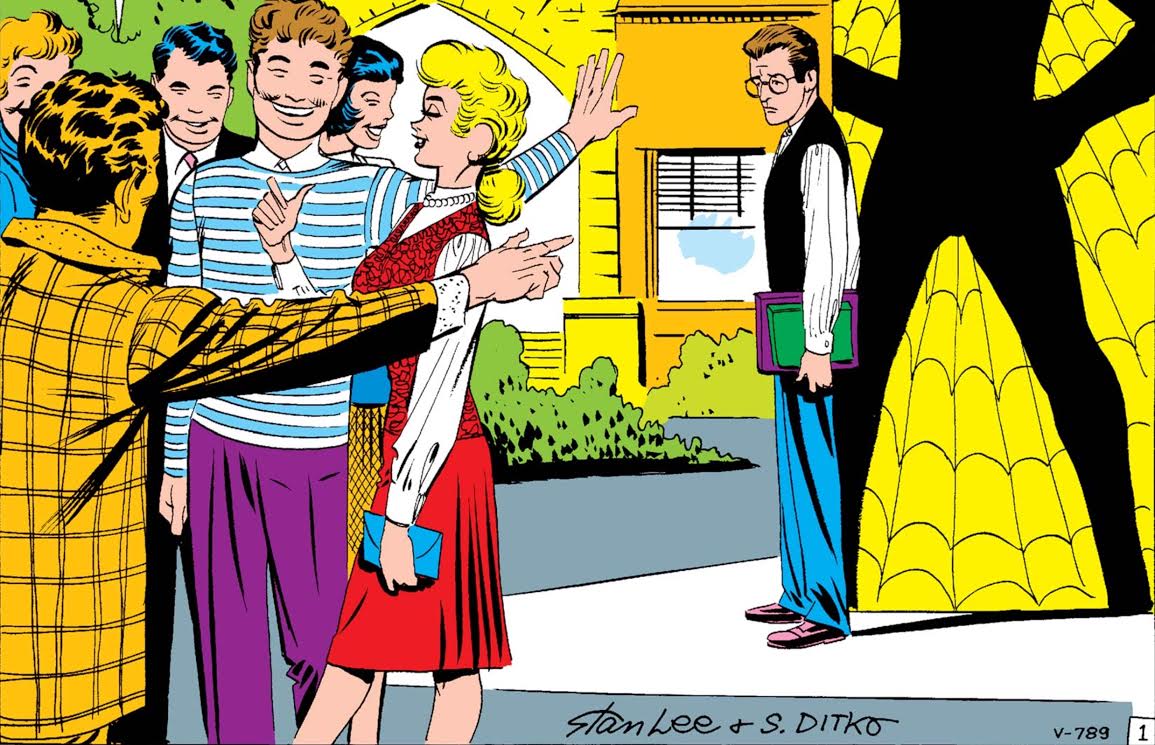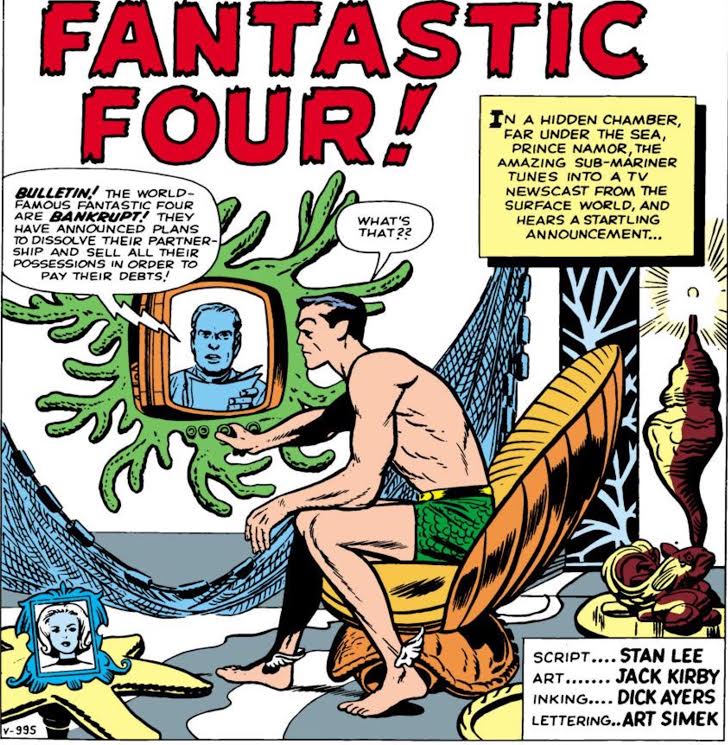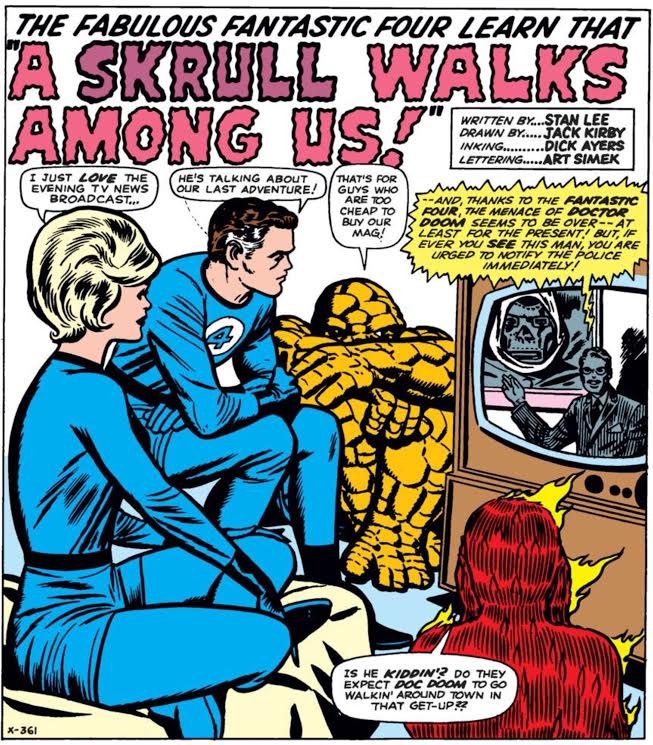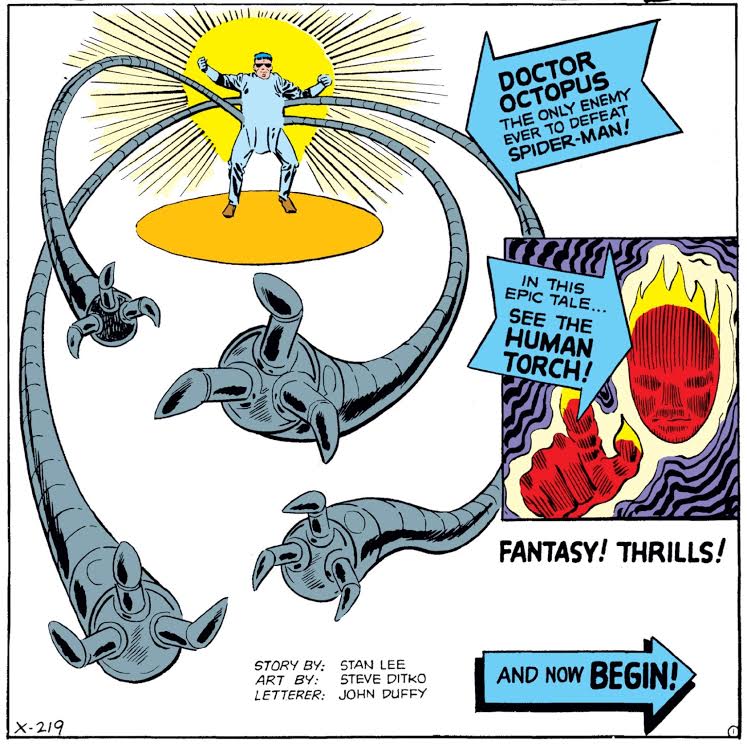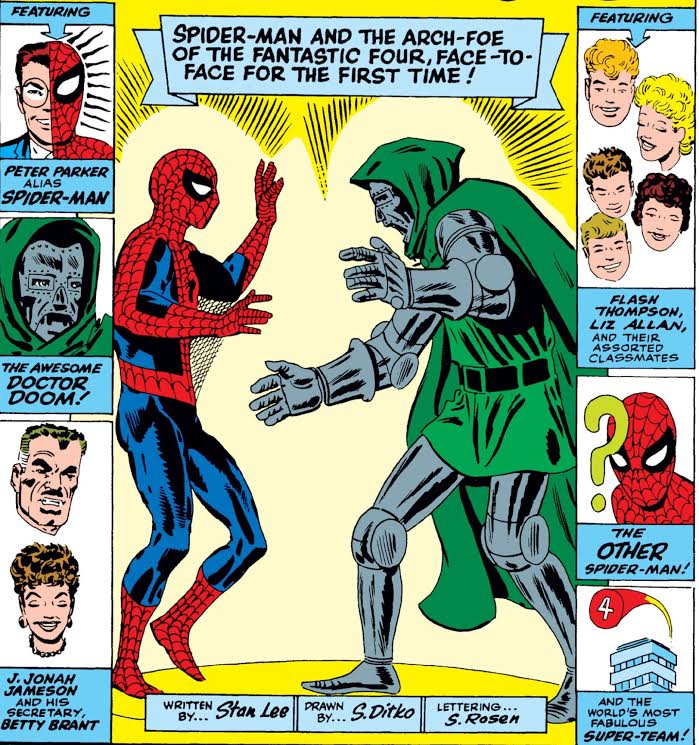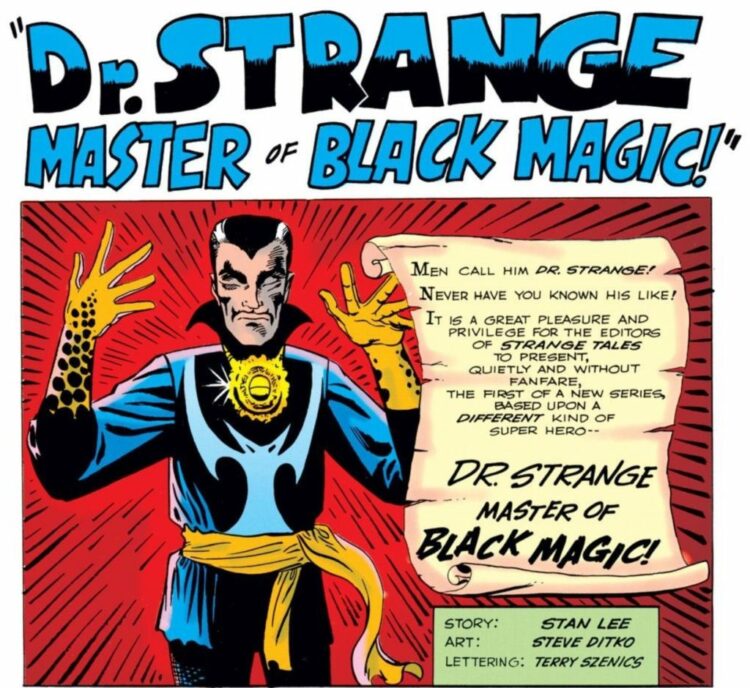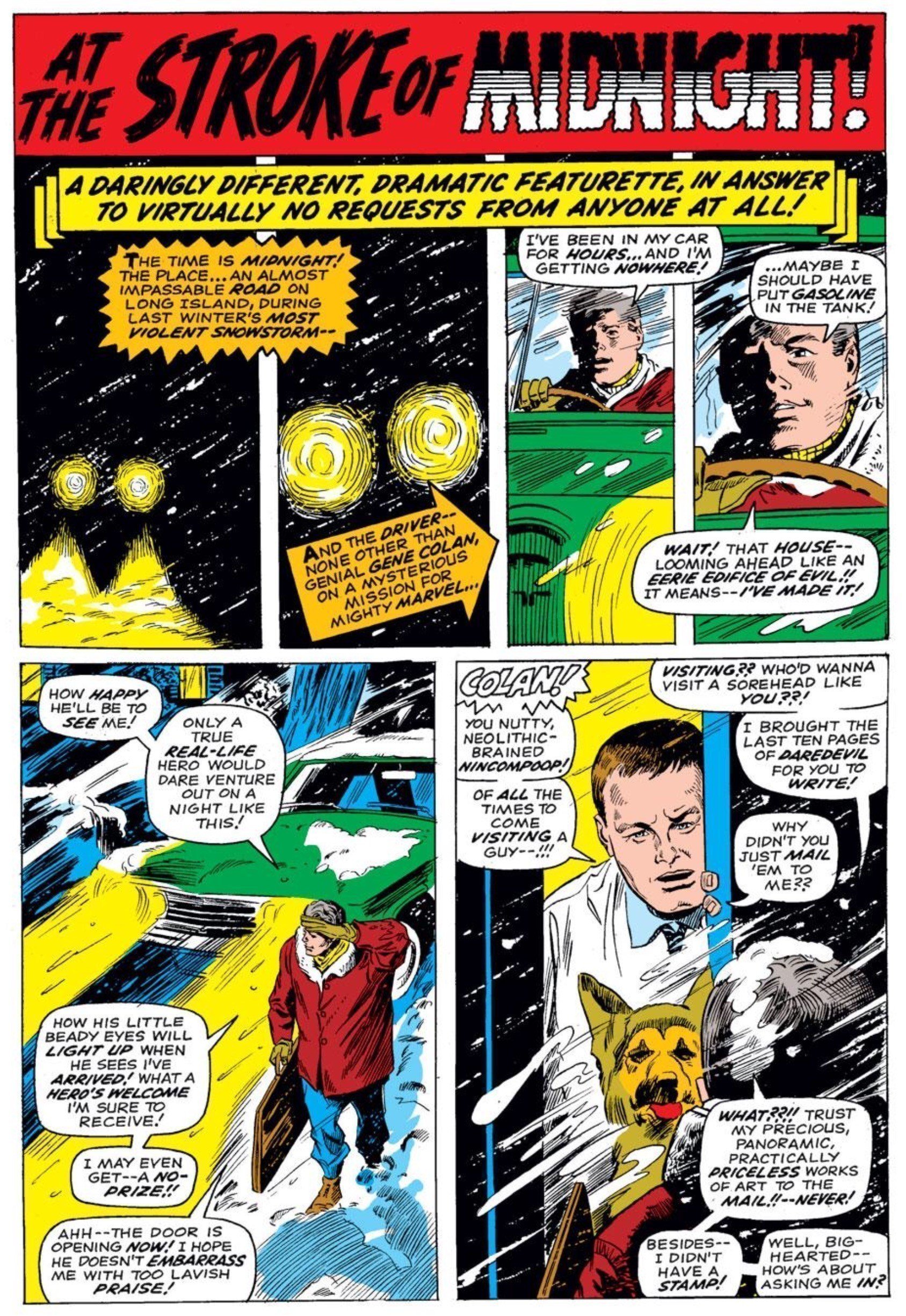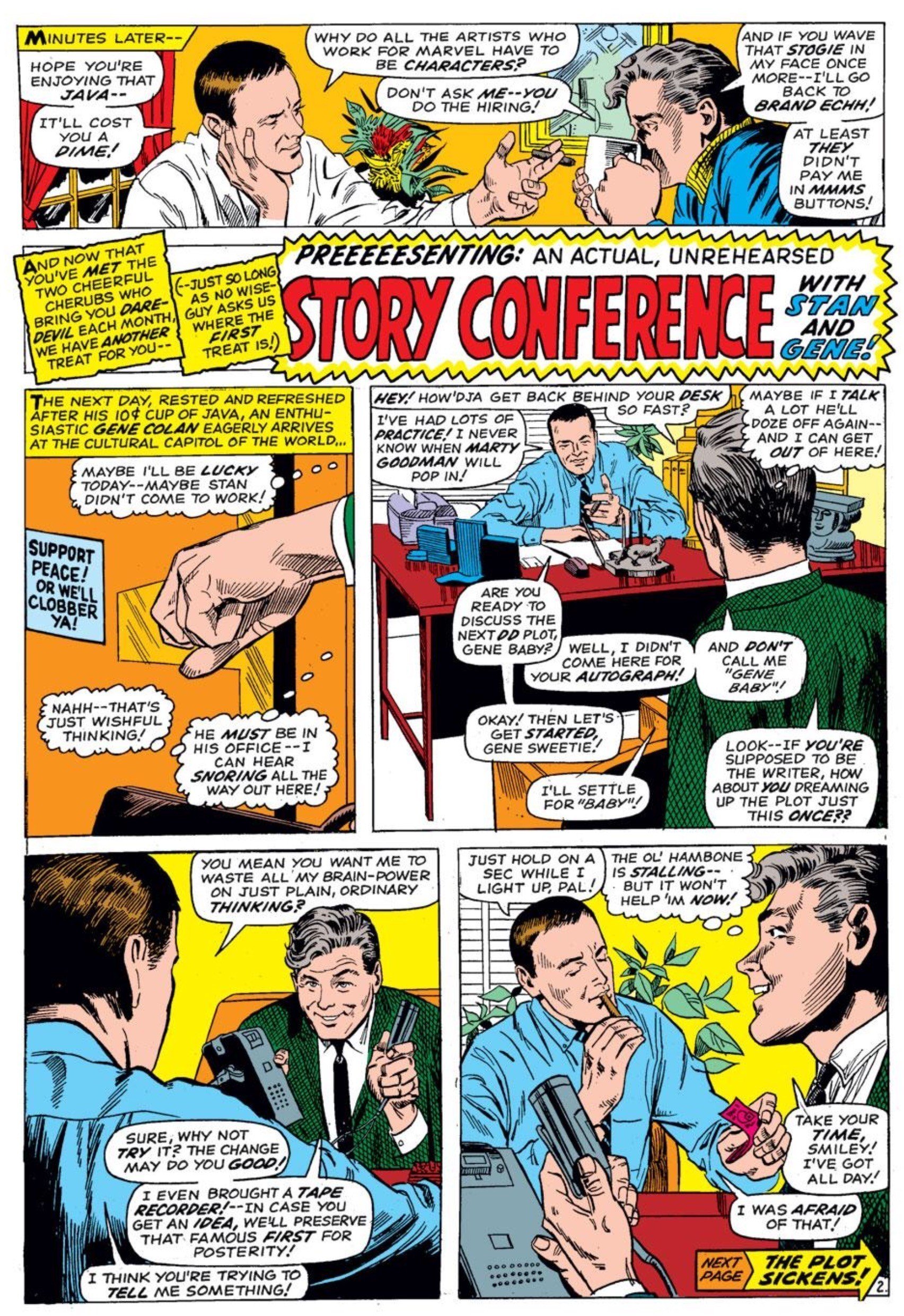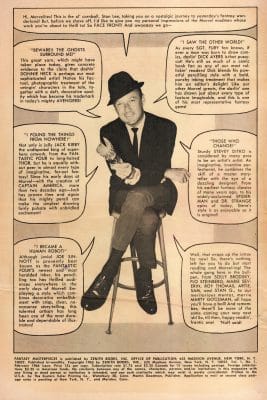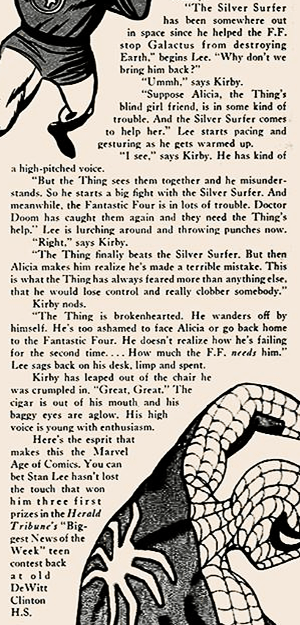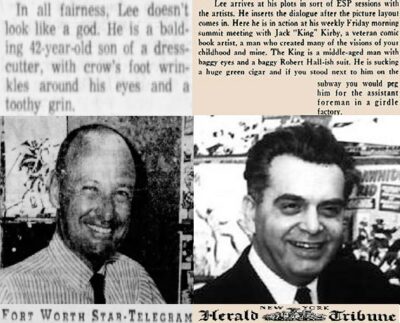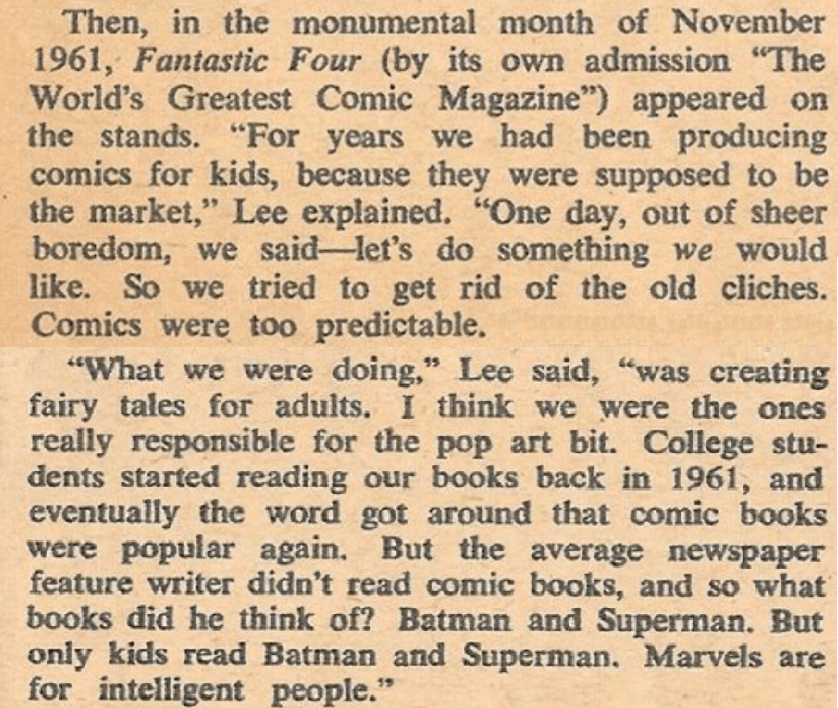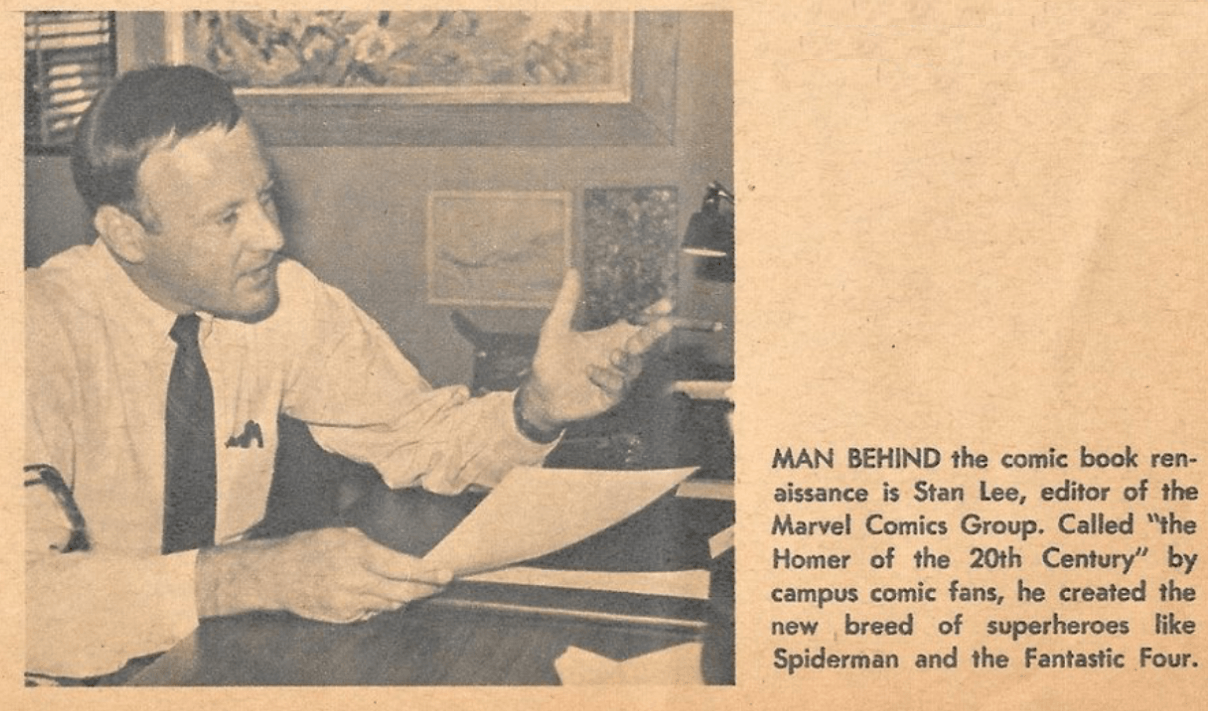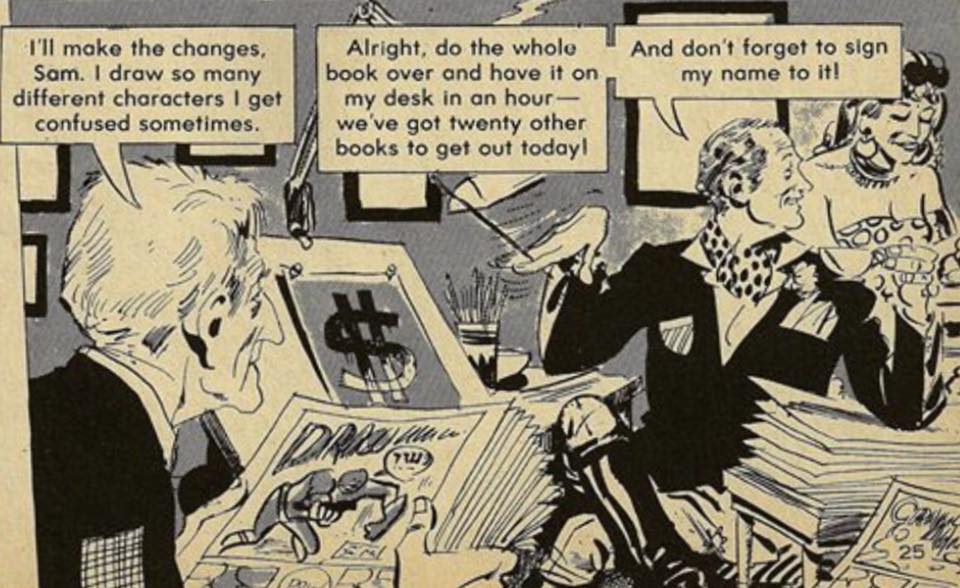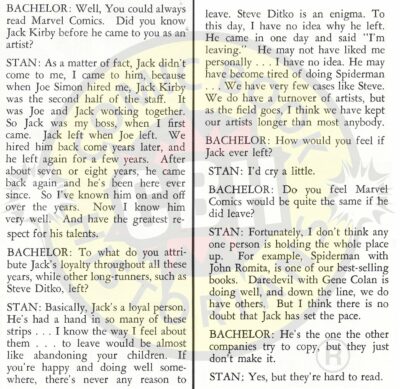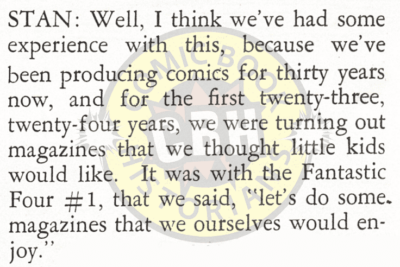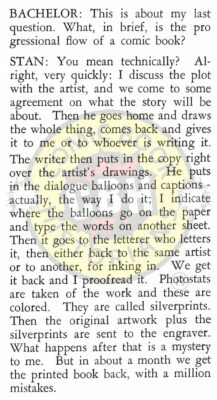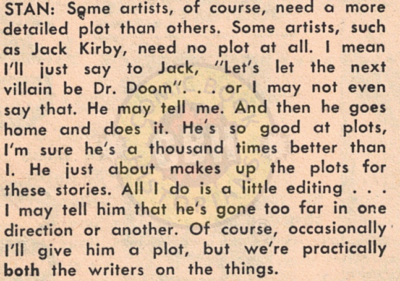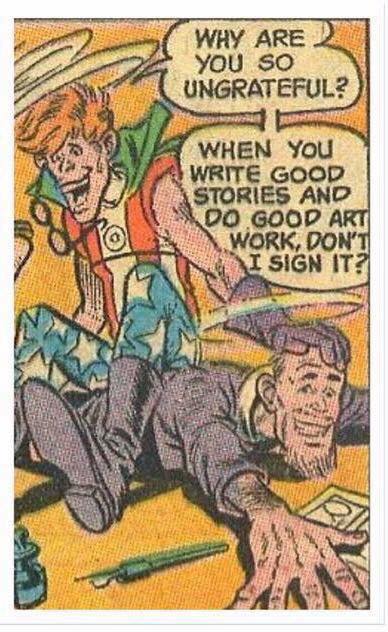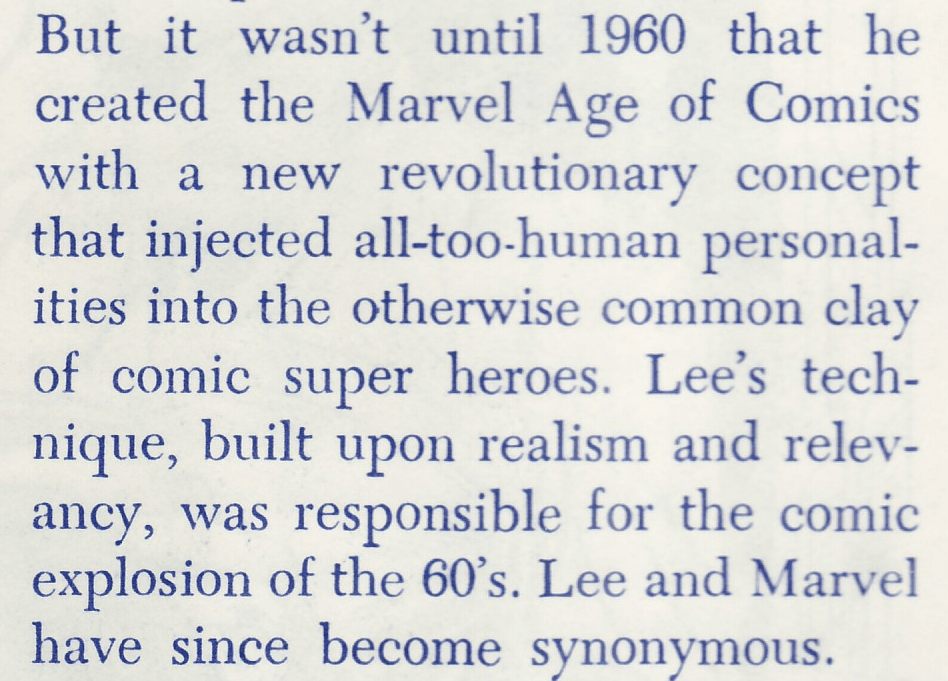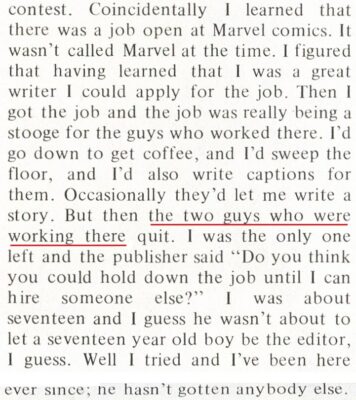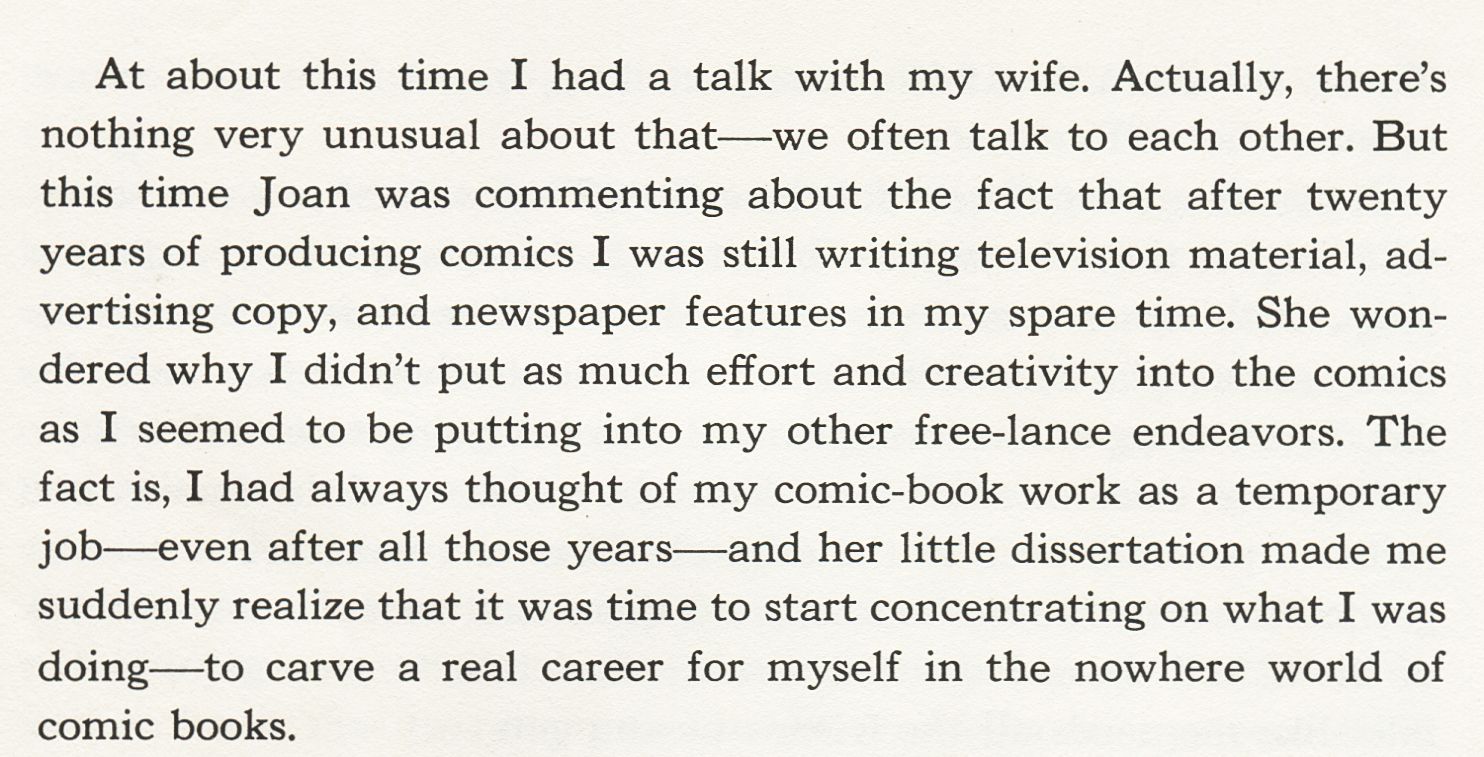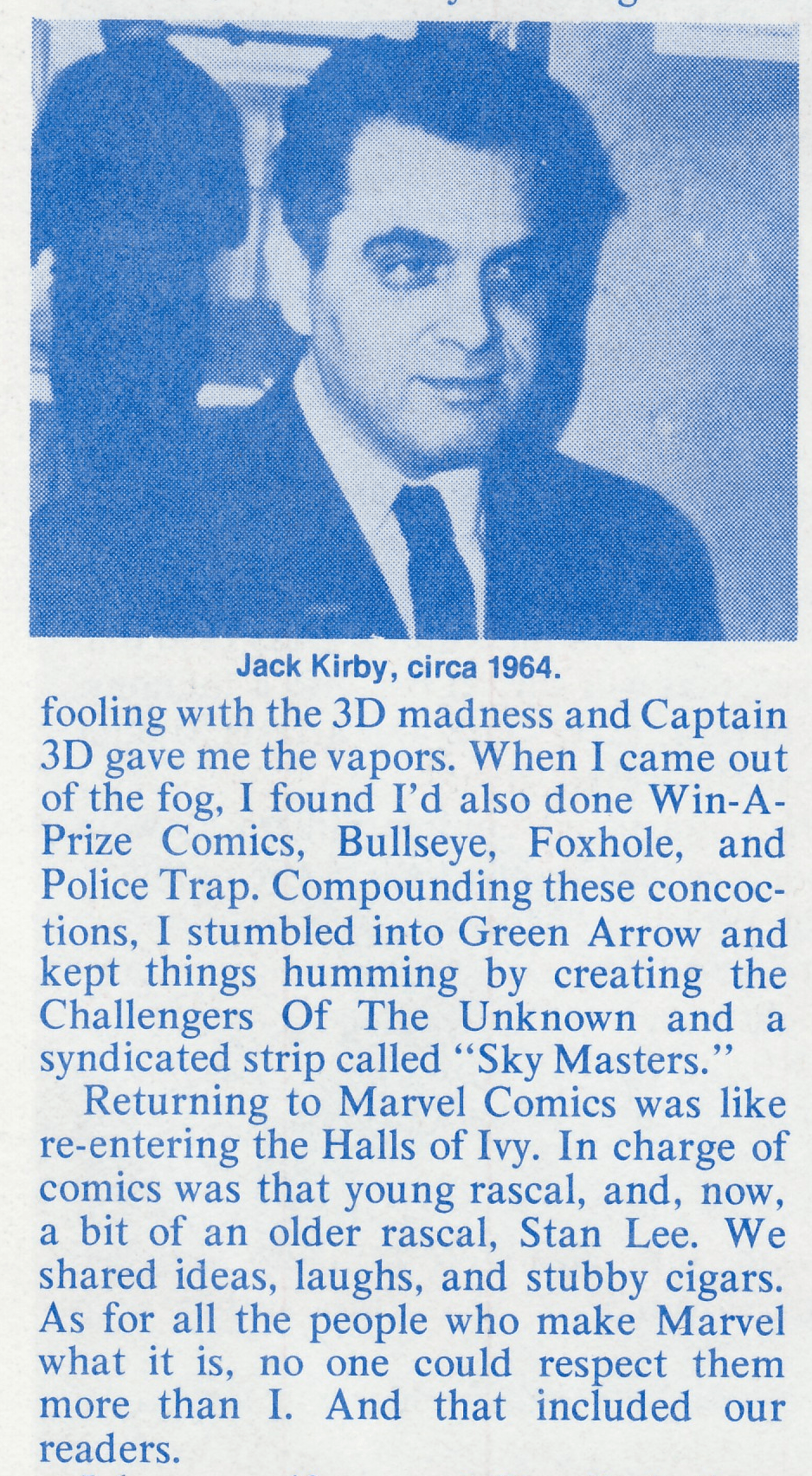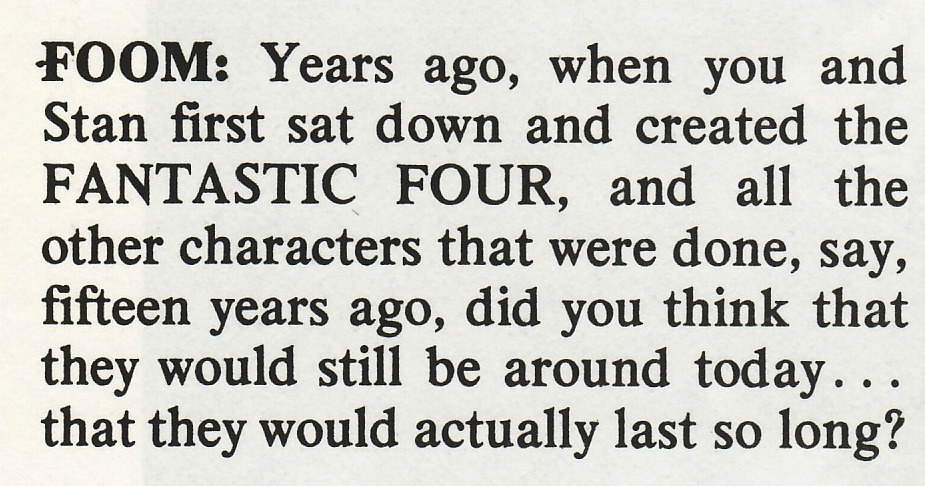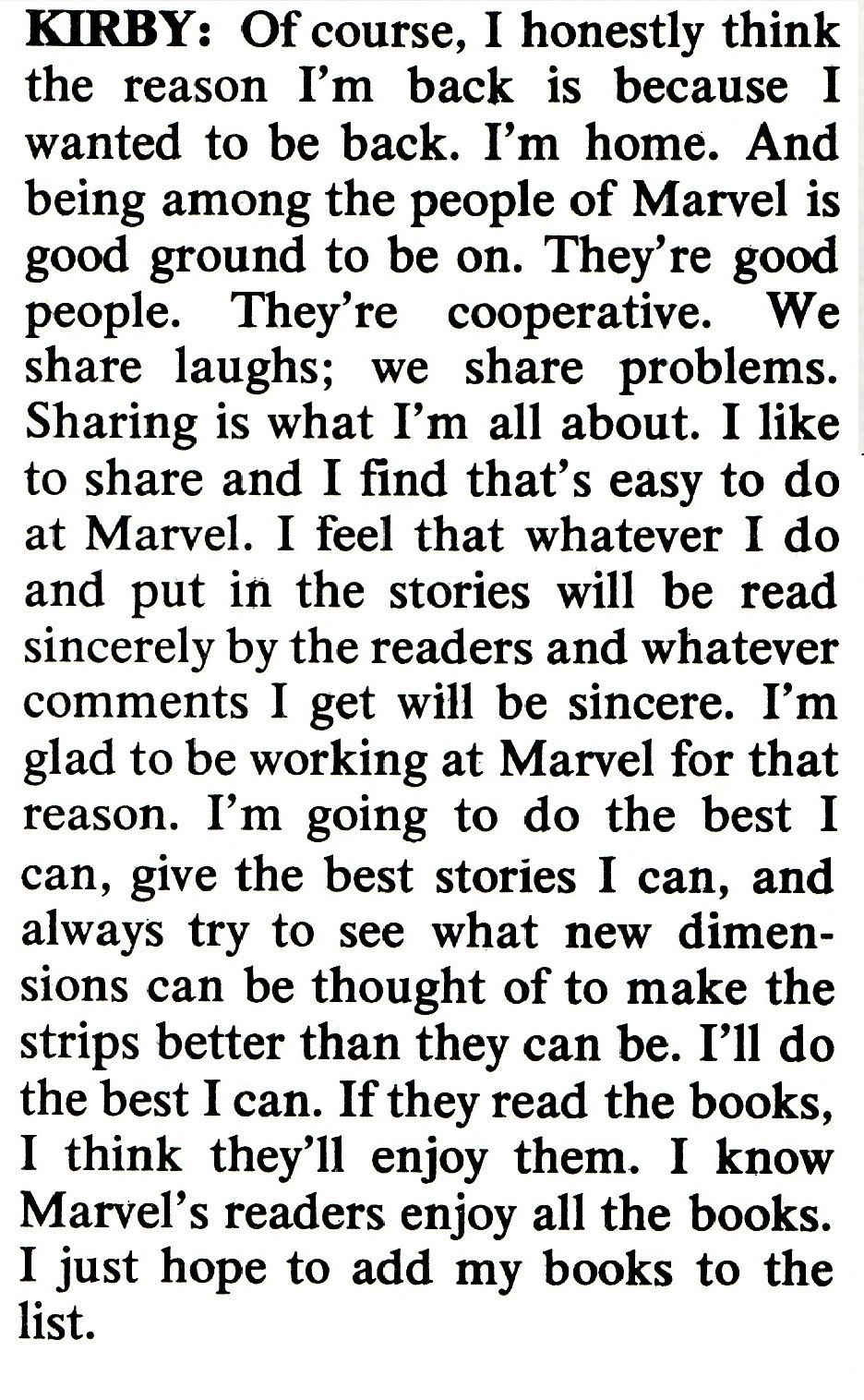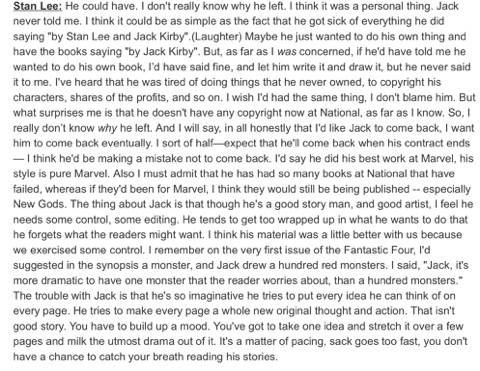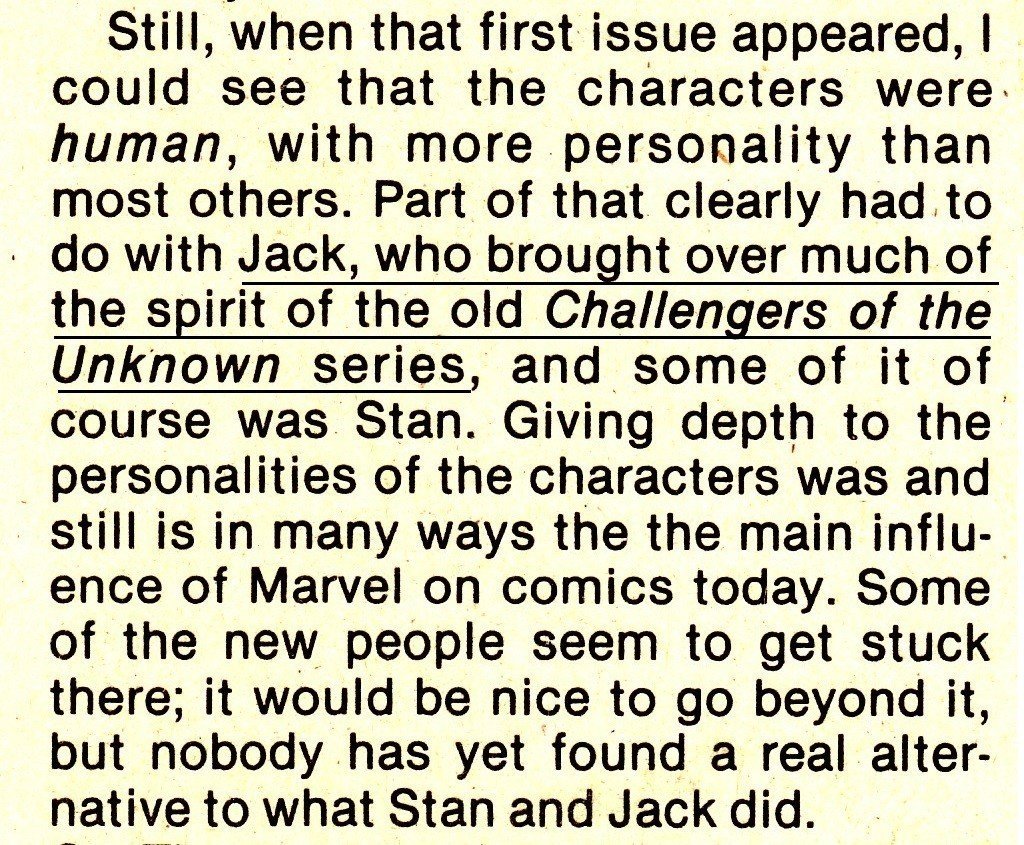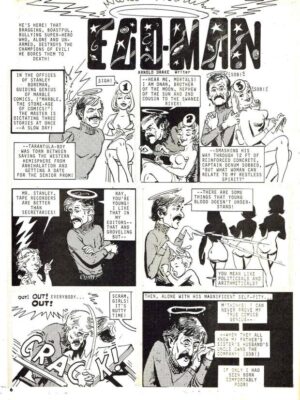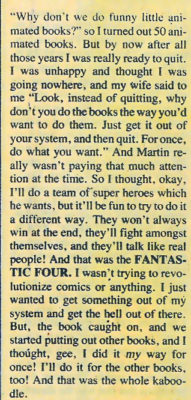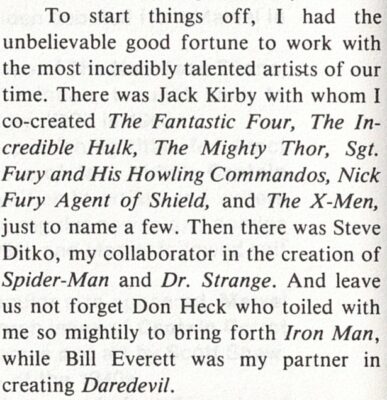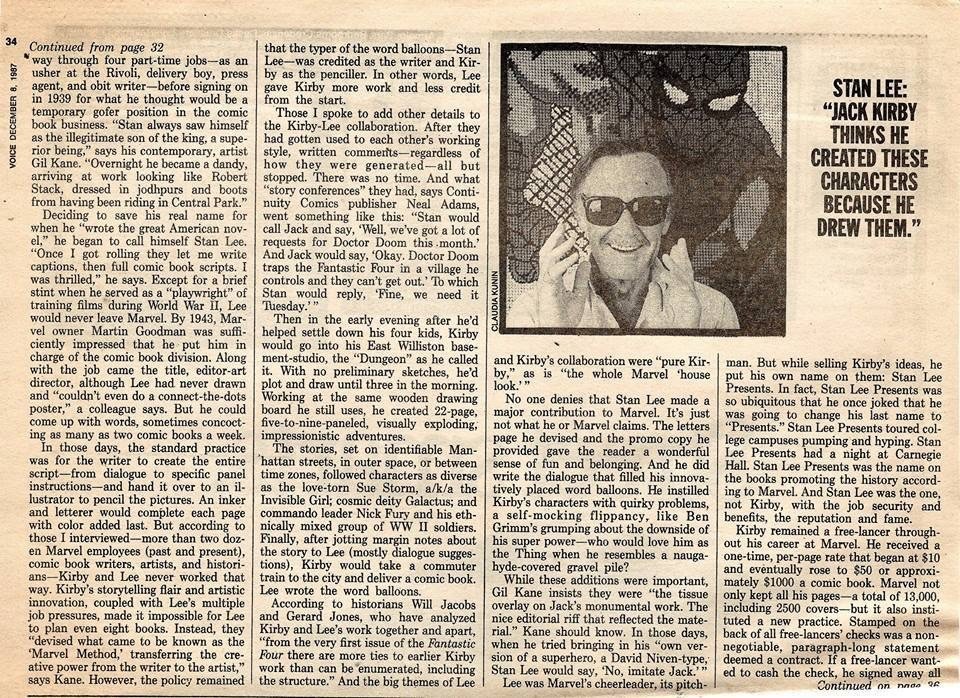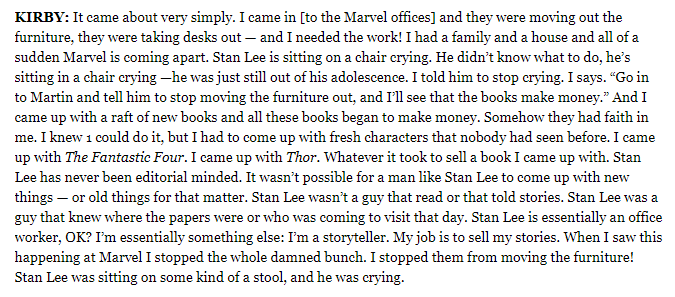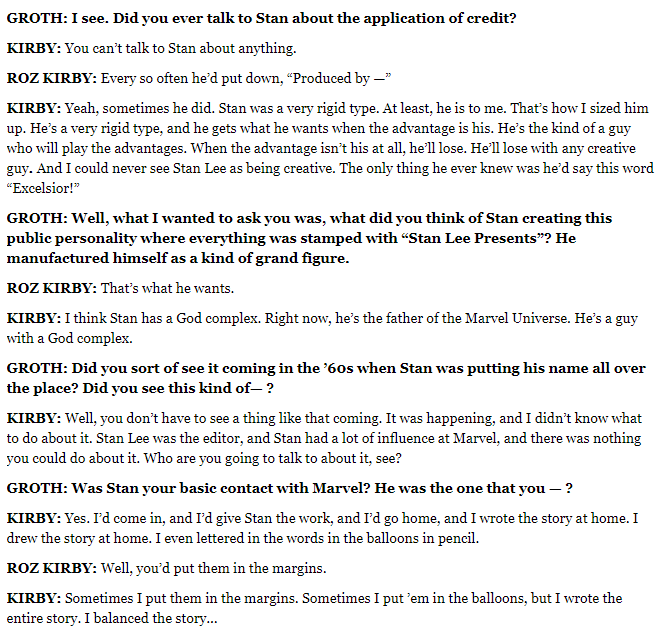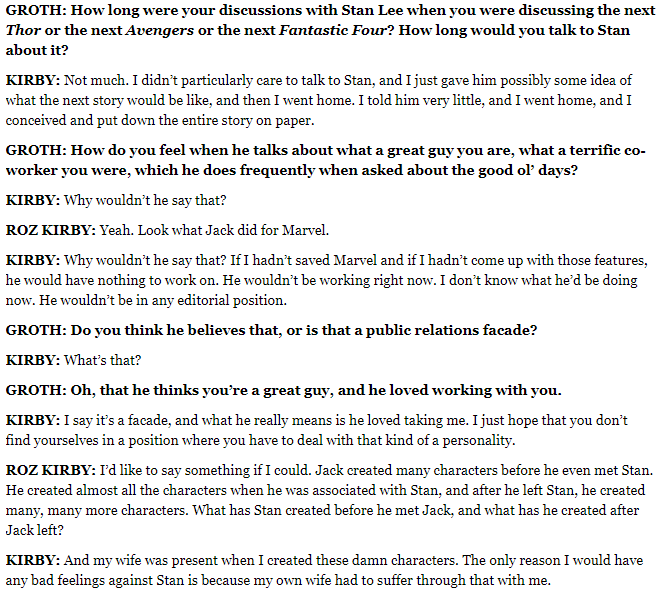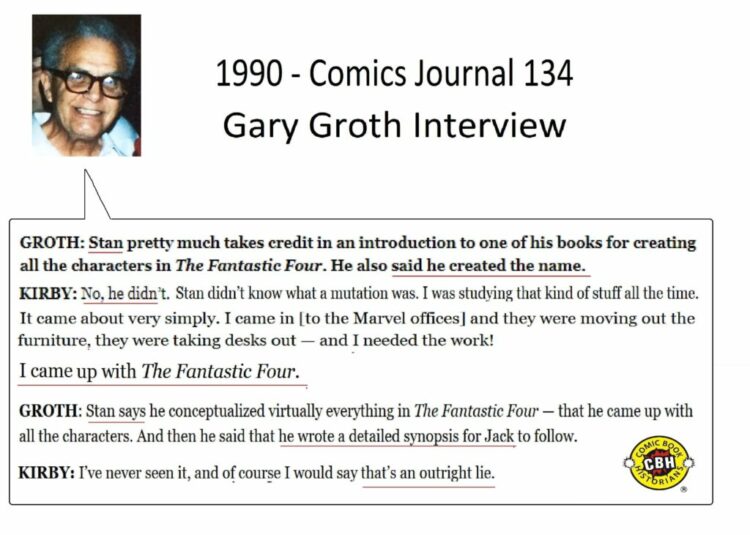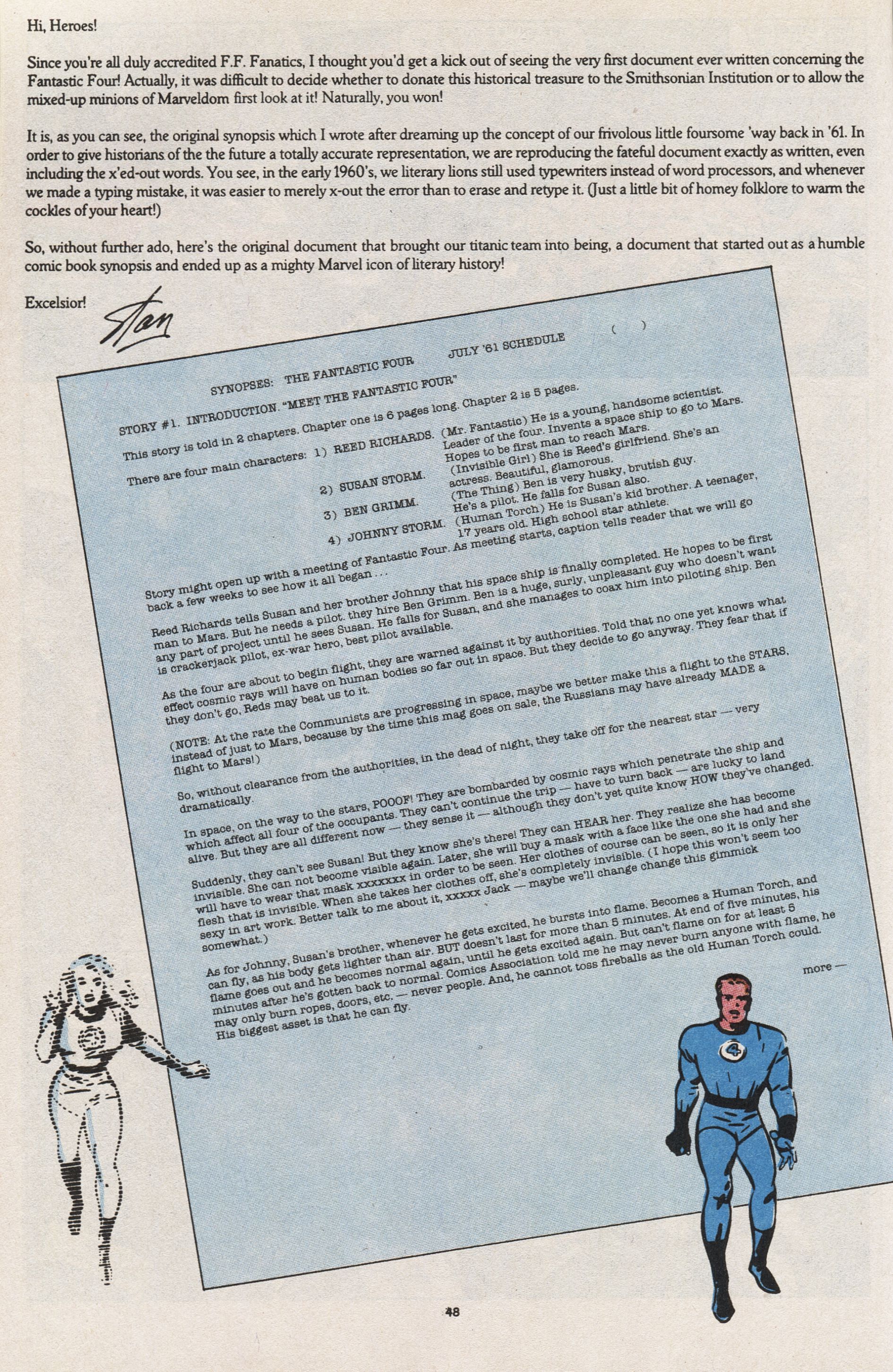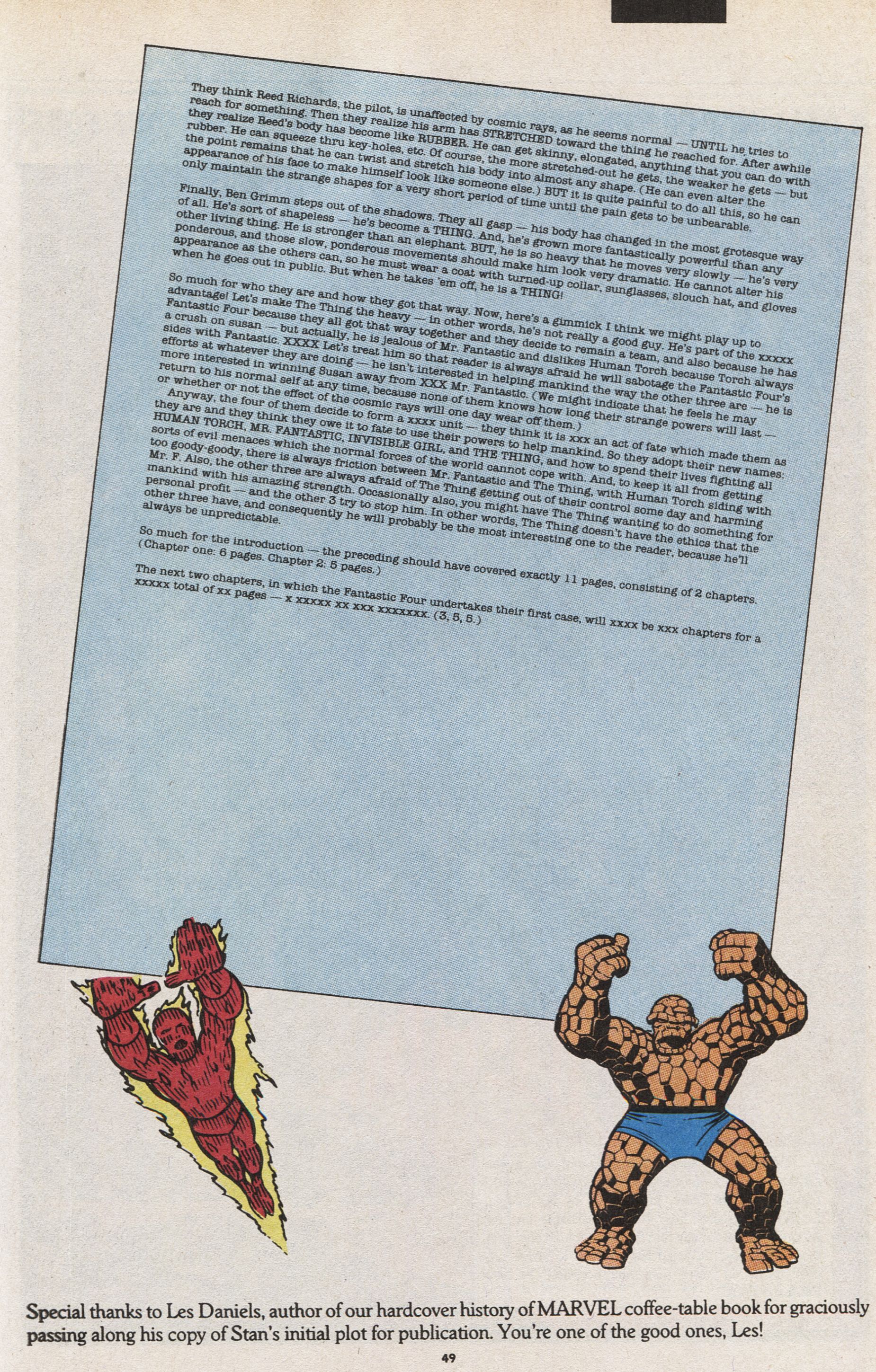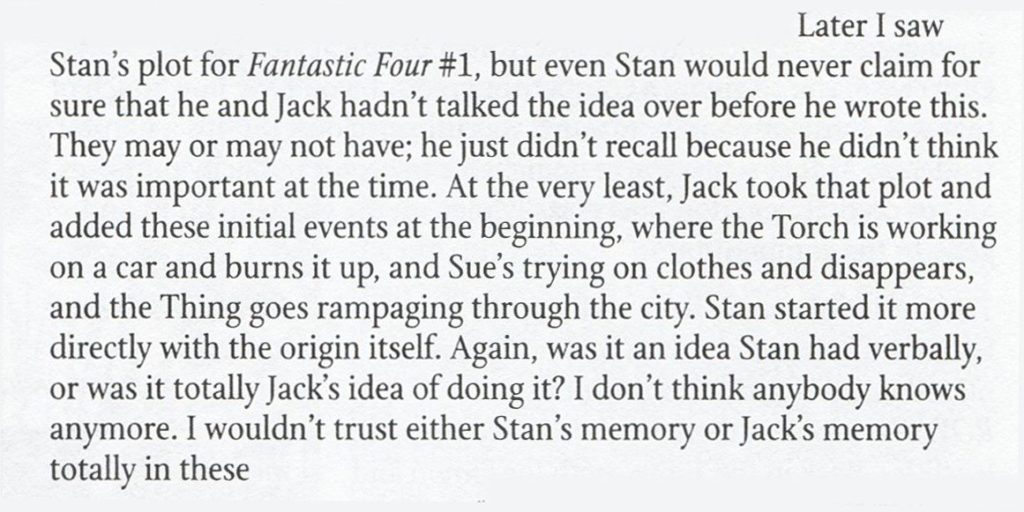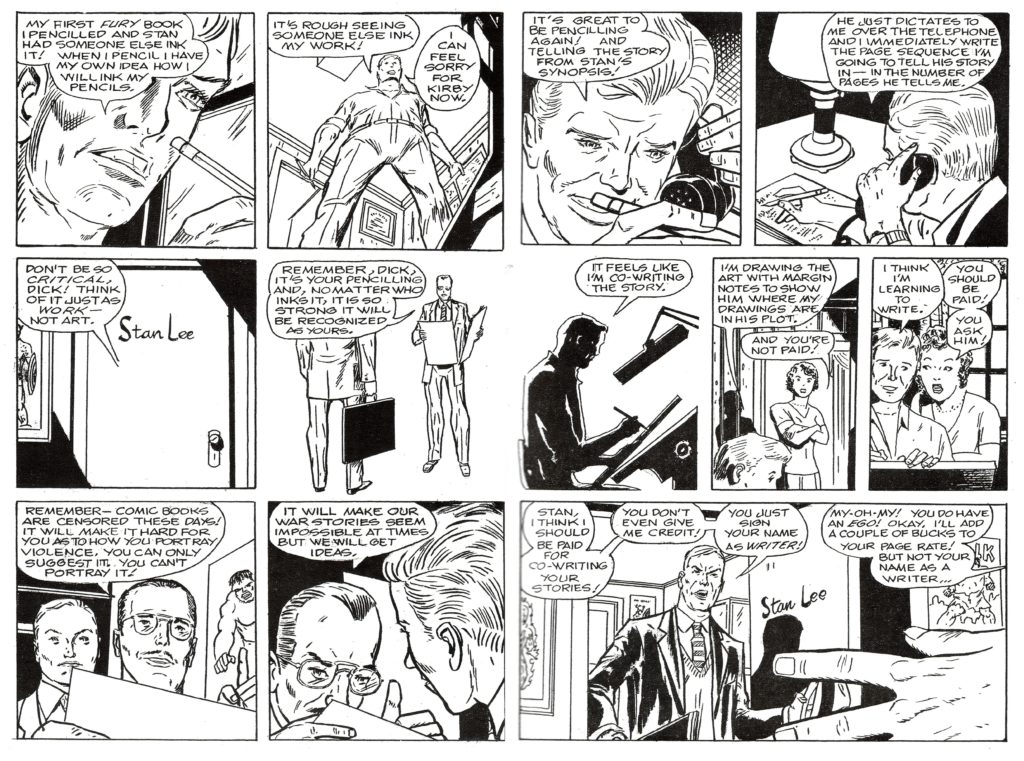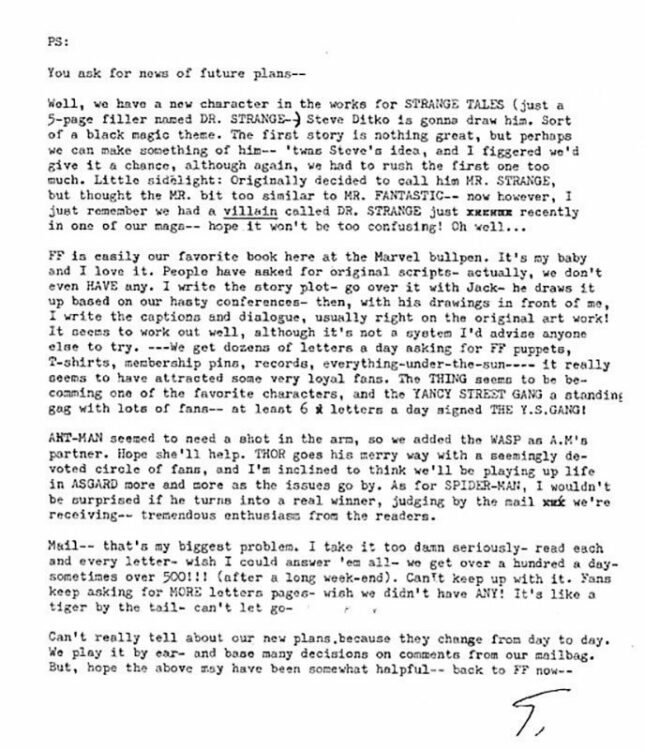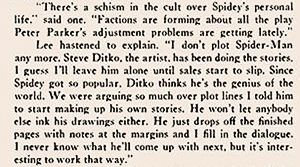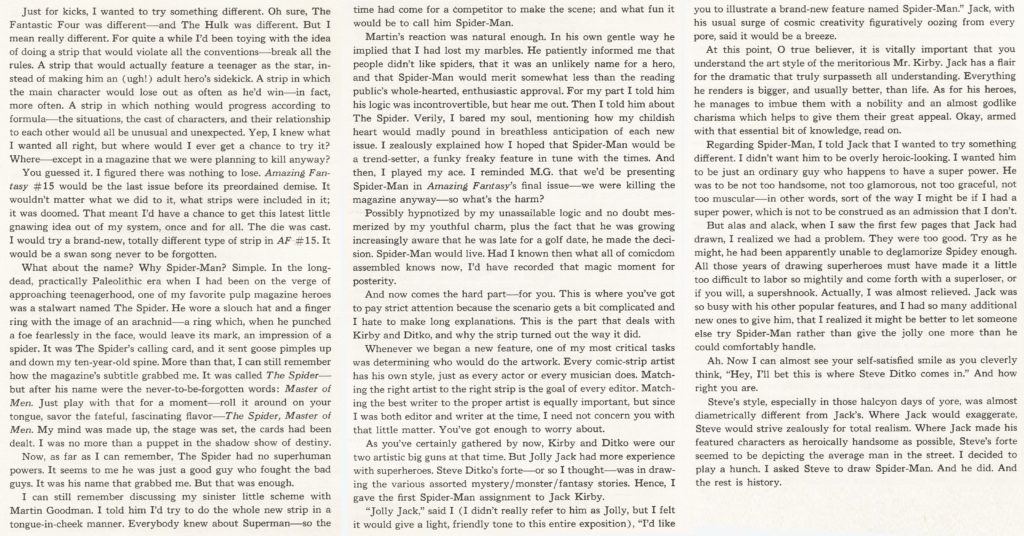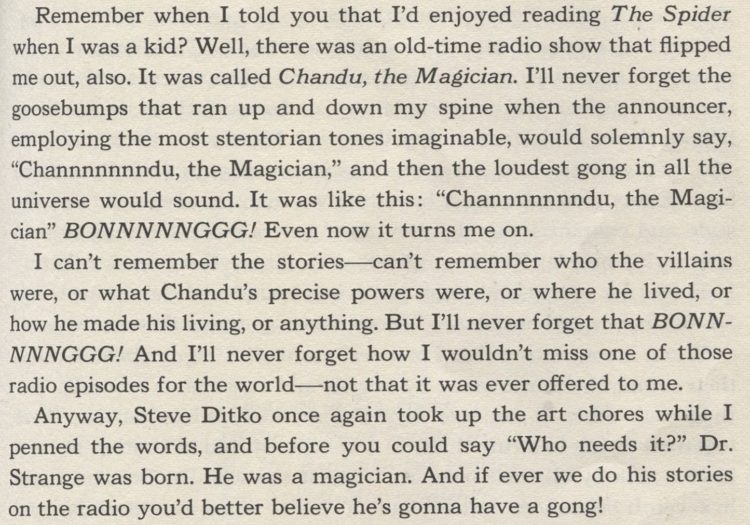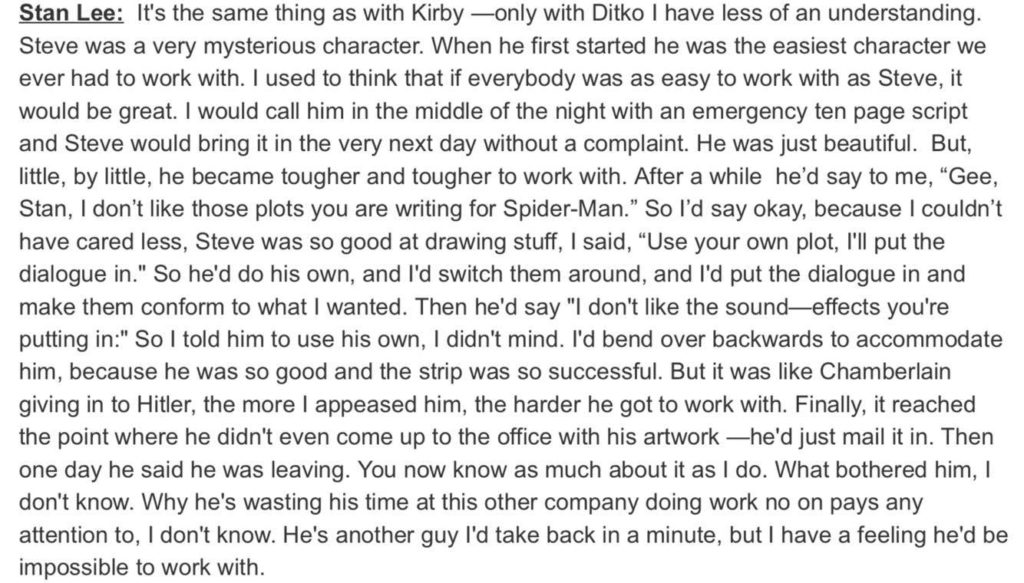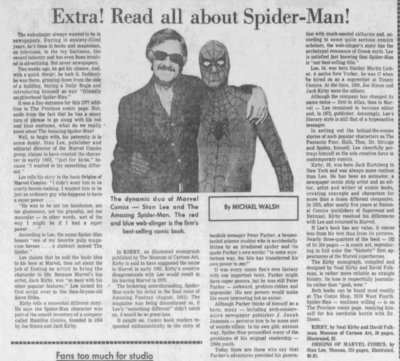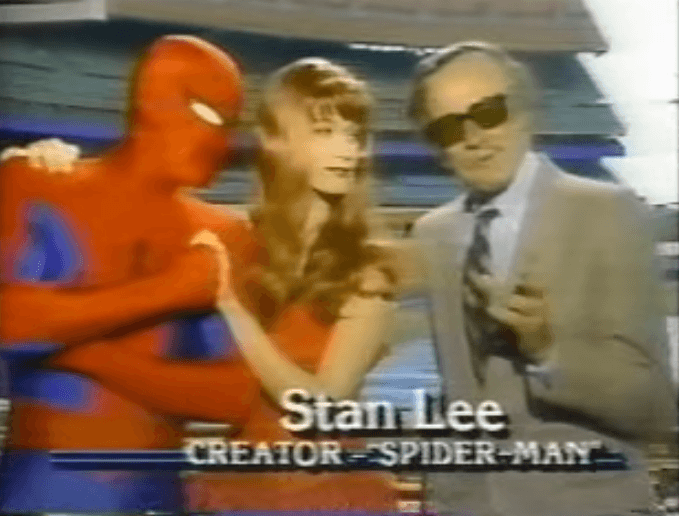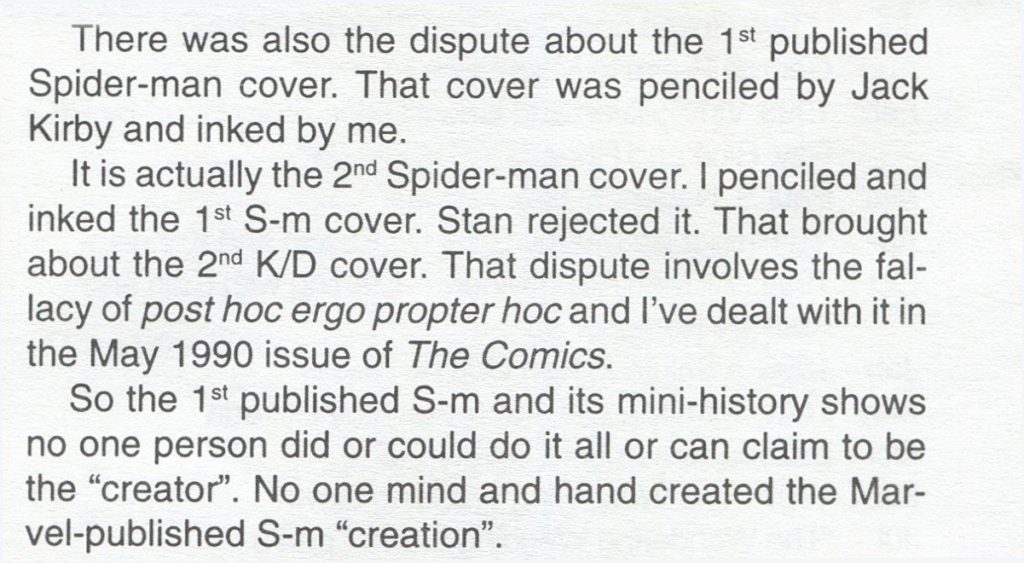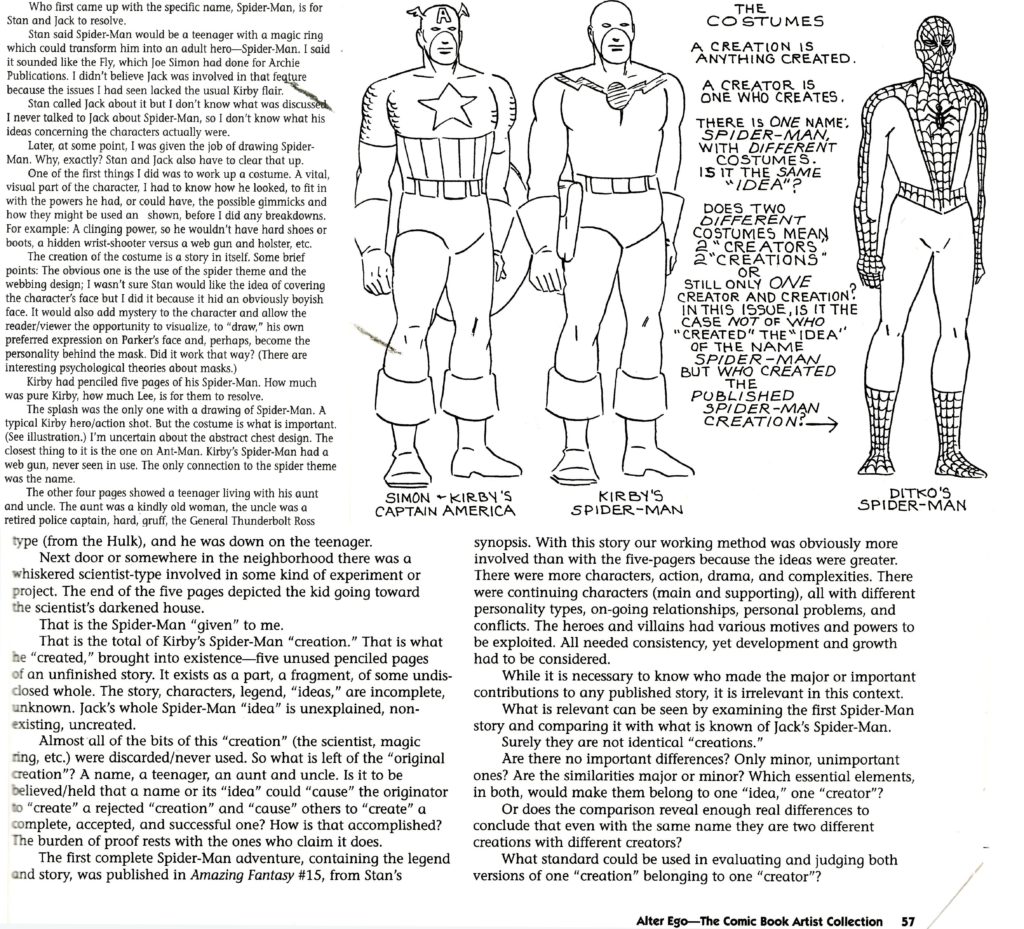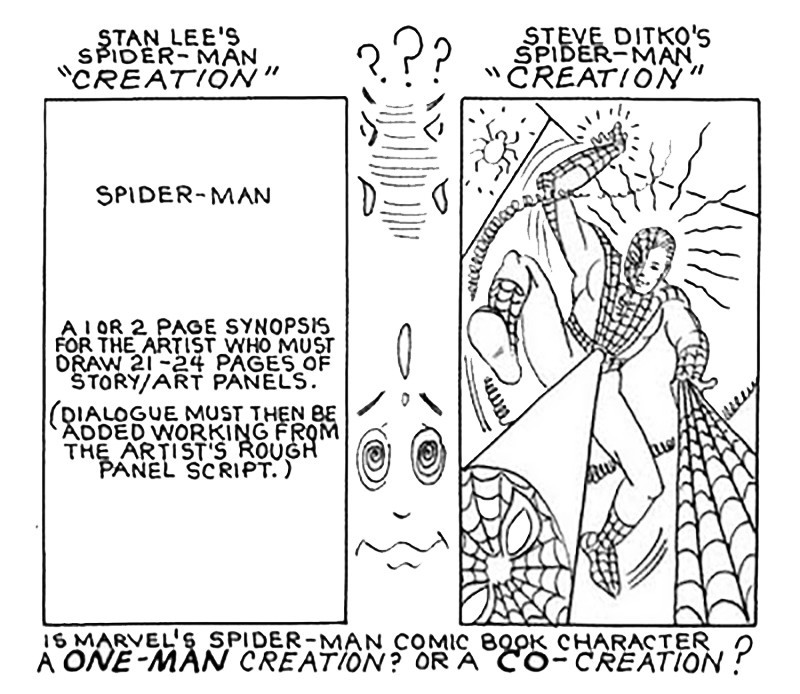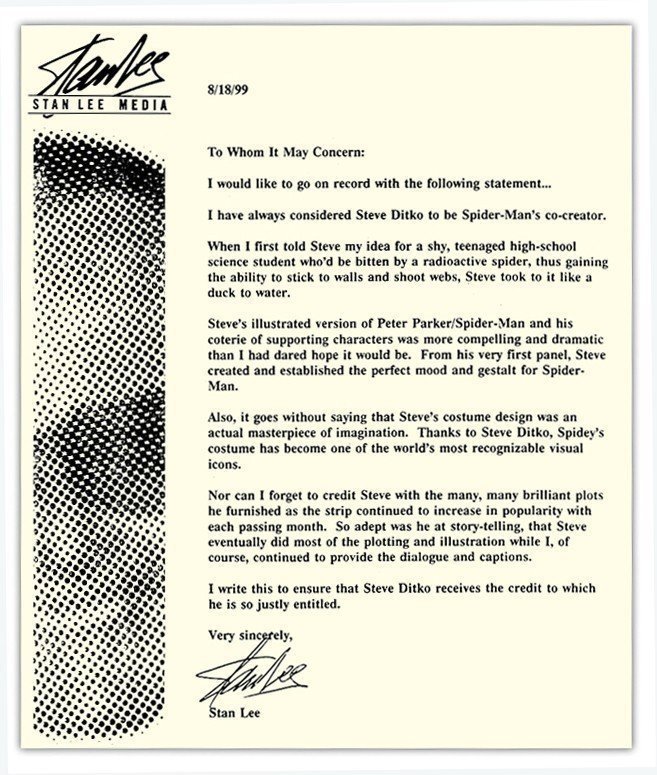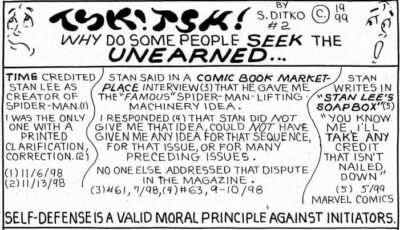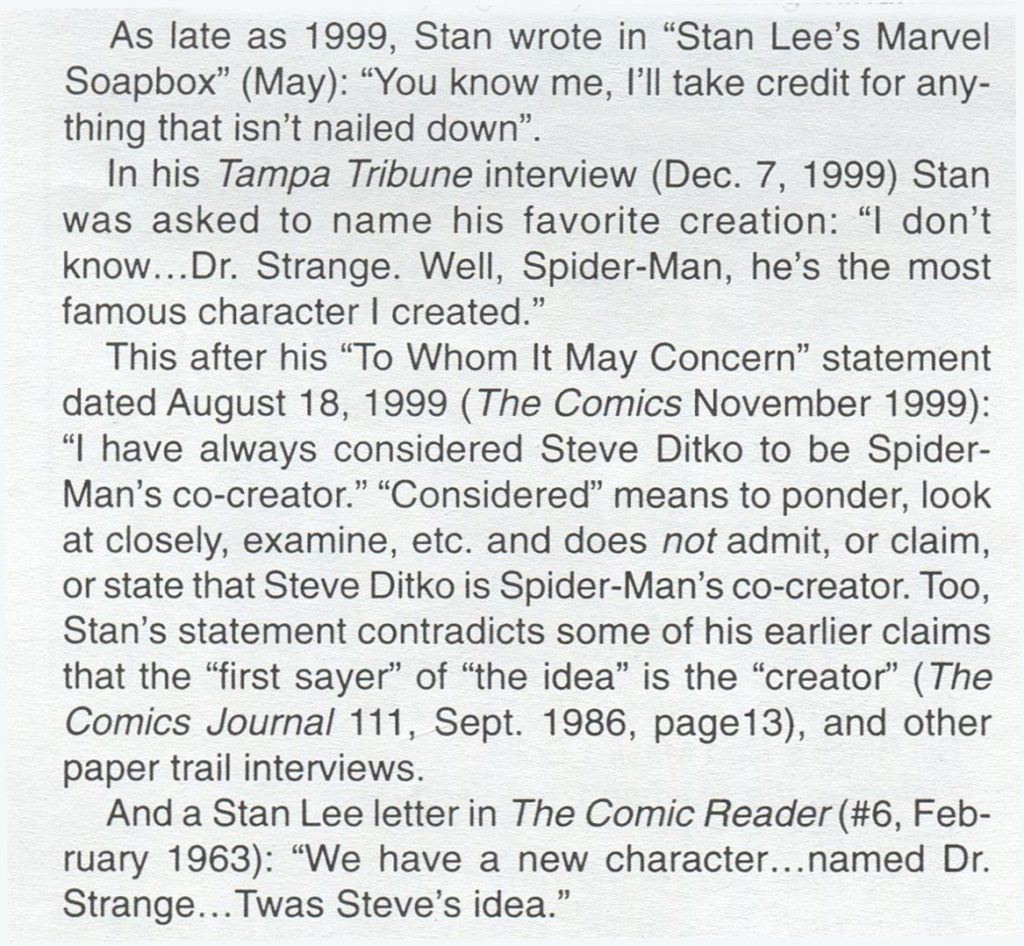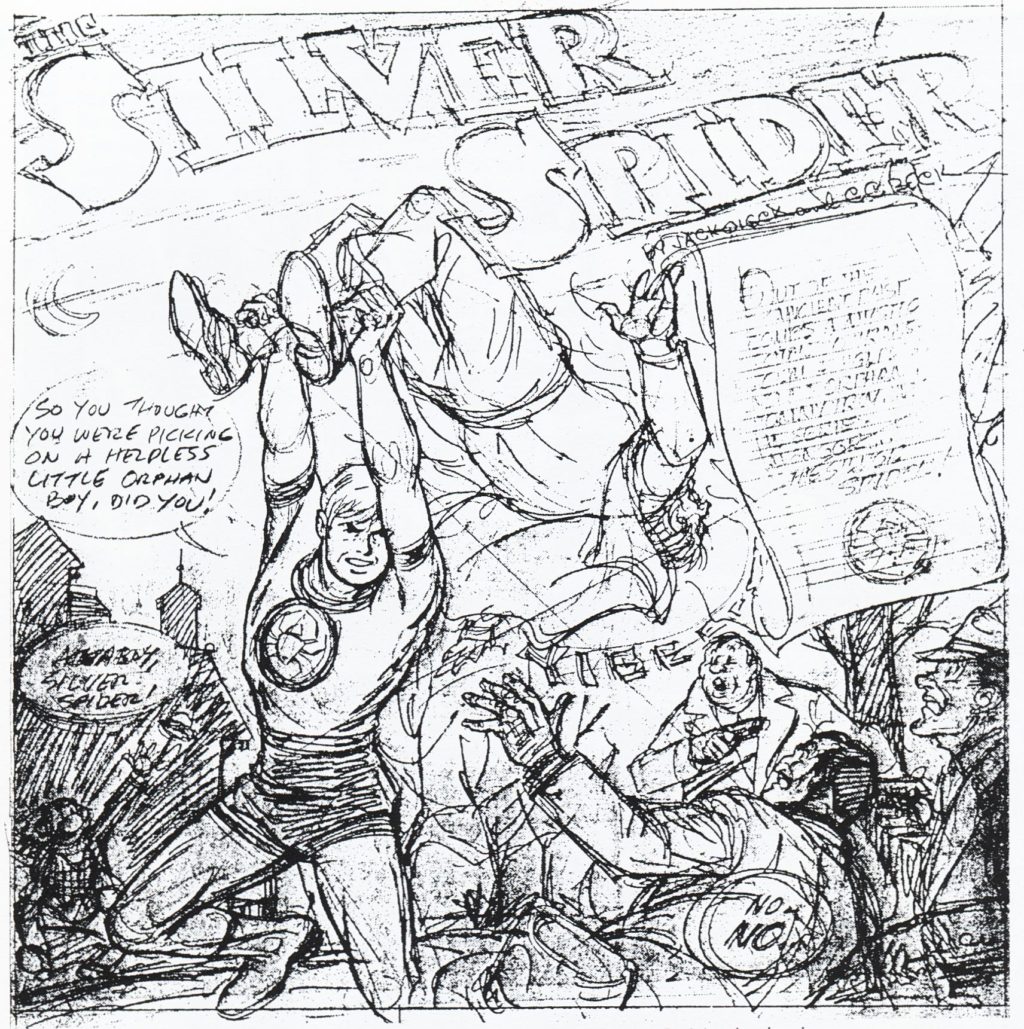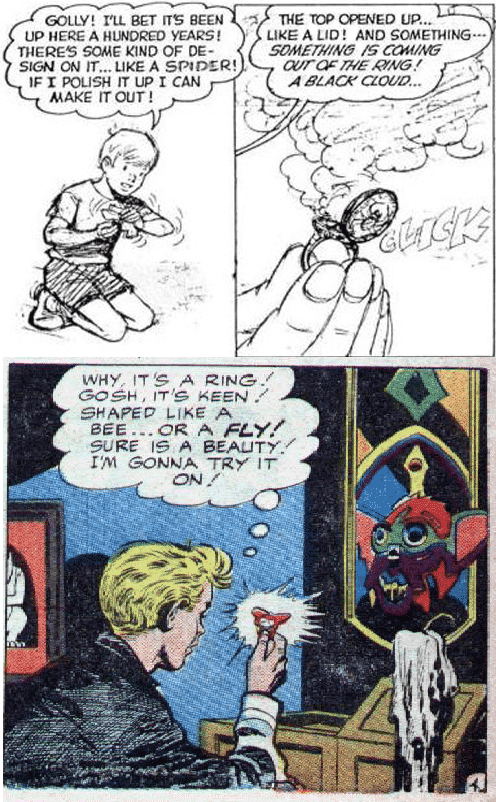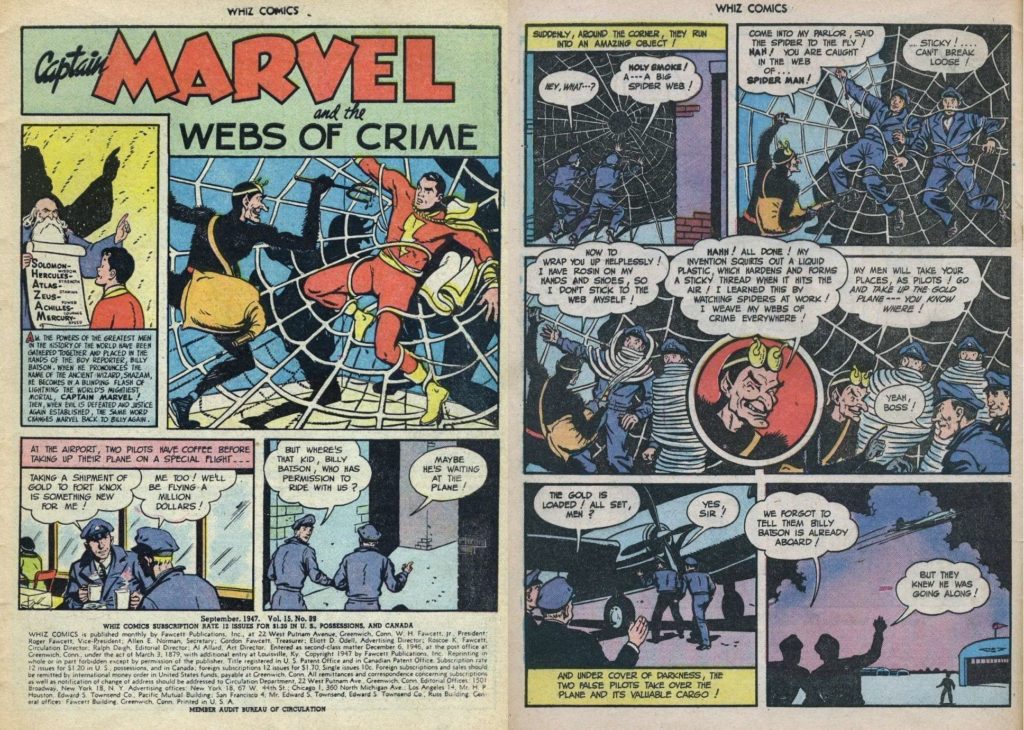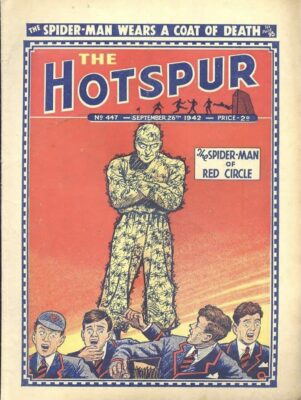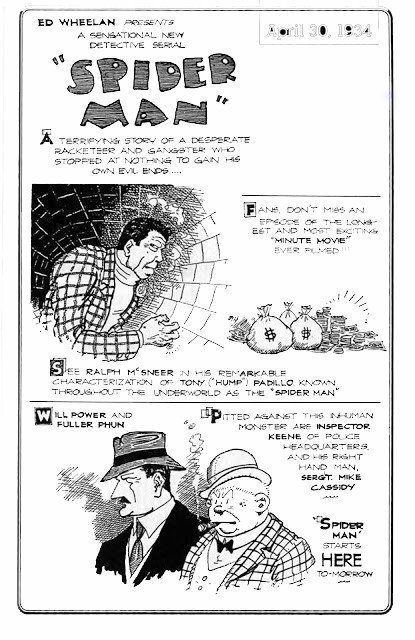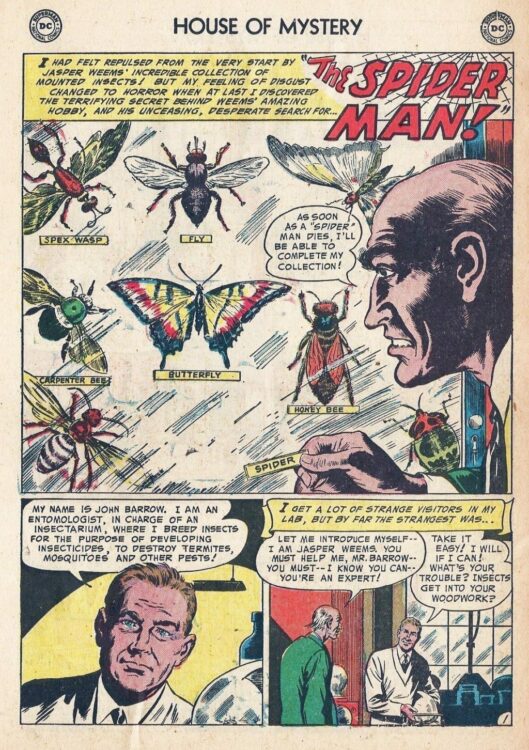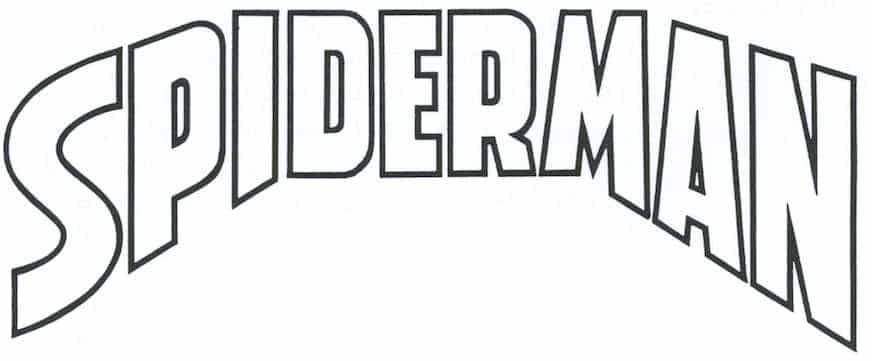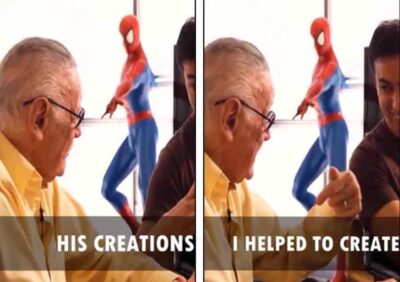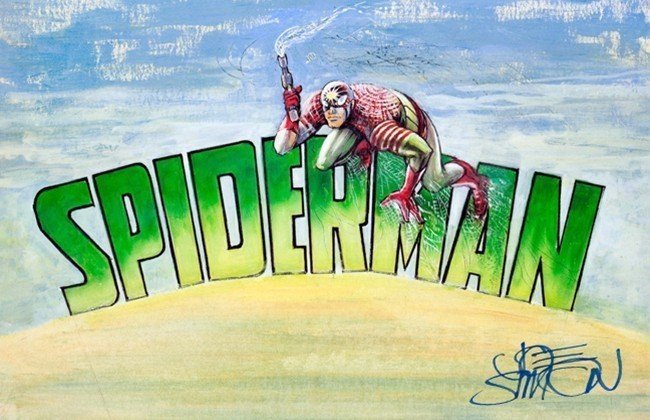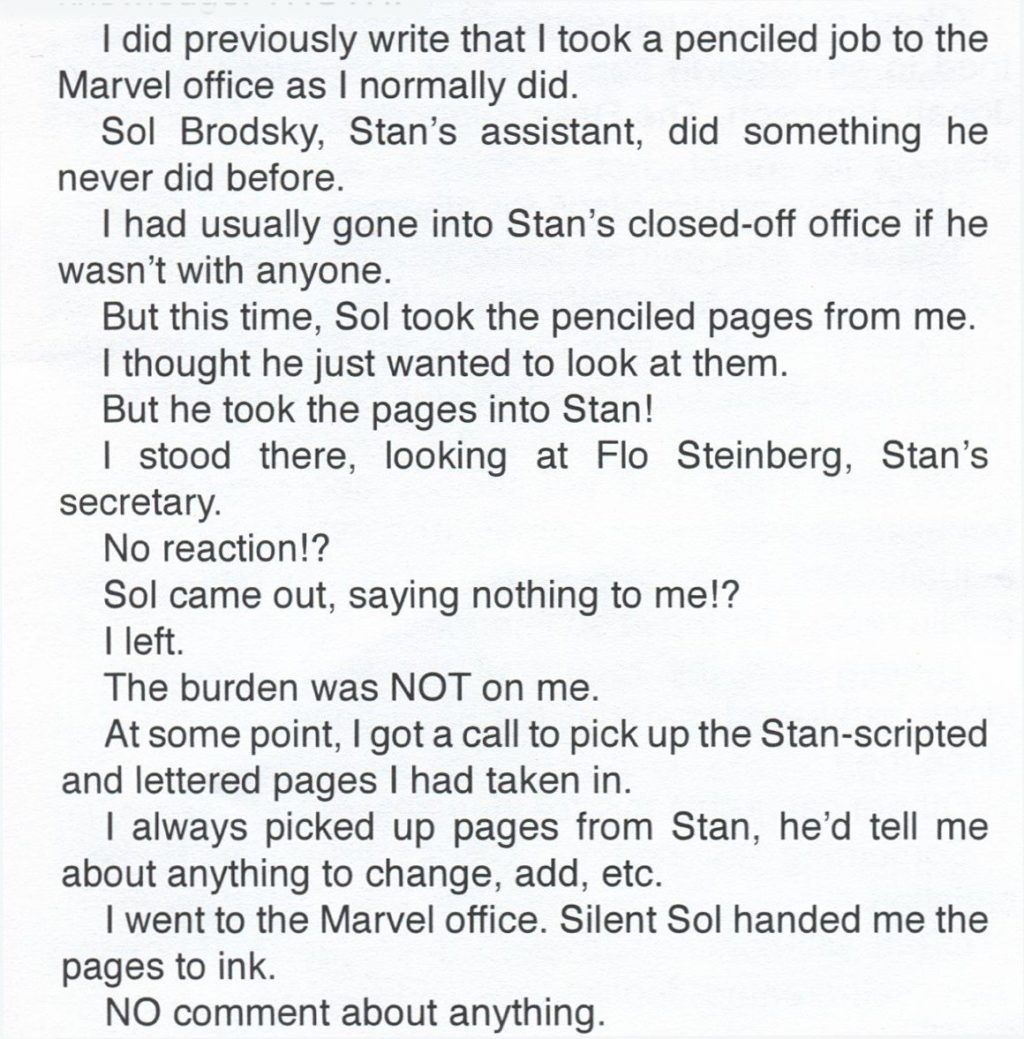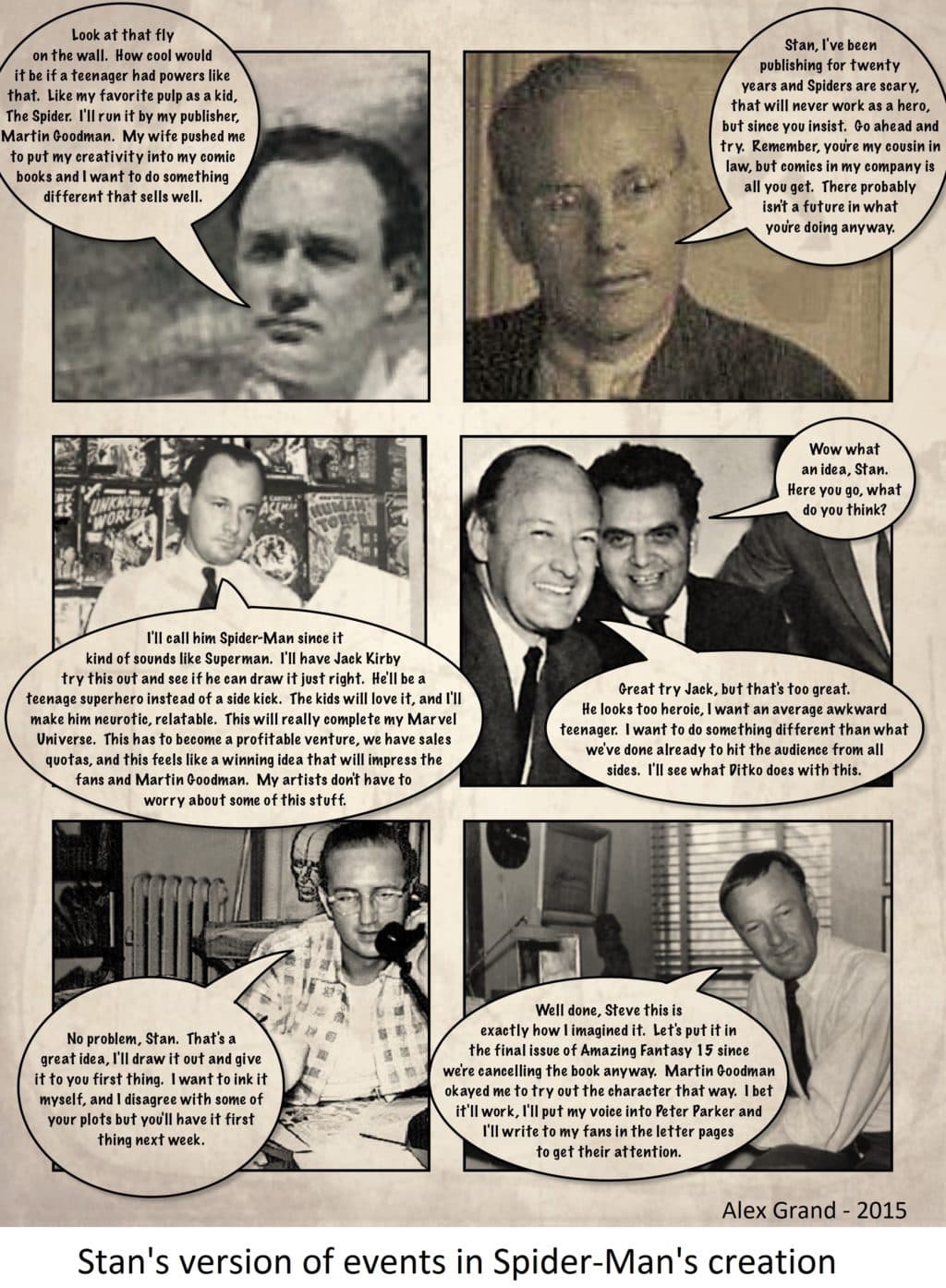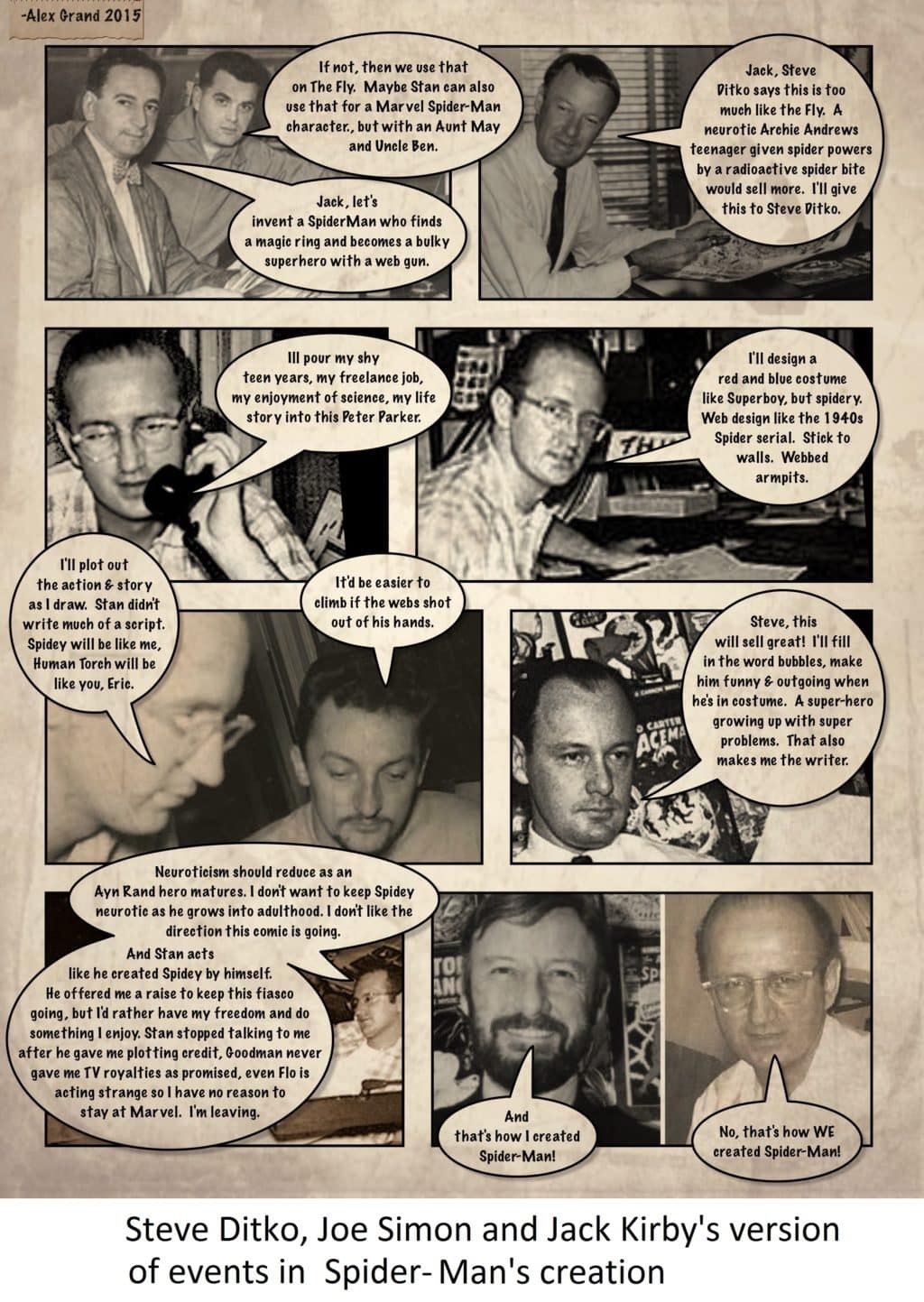Marvel 1960s: Jack Kirby, Stan Lee, & Steve Ditko; The controversy of who created what? by Alex Grand
Read Alex Grand’s Understanding Superhero Comic Books published by McFarland Books in 2023 with Foreword by Jim Steranko with editorial reviews by comic book professionals, Jim Shooter, Tom Palmer, Tom DeFalco, Danny Fingeroth, Alex Segura, Carl Potts, Guy Dorian Sr. and more.
In the meantime enjoy the show:
Jack Kirby, Steve Ditko and Stan Lee created an incredible Superhero entertainment franchise in the 1960s, however there were claims of who created what, and controversies of stolen credit that have tainted their work in the decades since. Let’s go down our timeline for each of the two crowning achievements of the 1960s Marvel Age, Fantastic Four (with Kirby and Lee) and the Amazing Spider-Man ( with Ditko and Lee).
As shown in previous episodes, Jack, Stan and Steve co-created the Marvel Universe in the 1960s, but there have been differing accounts since of who created what and tension between all 3 creators that are interesting to examine. What blurs the waters even more is the Marvel Method which claims that Stan Lee gave them an idea, they’d flesh and plot it out and give it back to him to dialogue. Jack Kirby and Stan Lee co-created Fantastic Four 1, 1961 which started off the Marvel Universe and the credit for that first issue reads like this on the right side:
Stan Lee was a fully employed editor and chief on salary and Jack Kirby had a work for hire arrangement so they had very different legal situations but they were working for Marvel at the time. And we see the very first of the Fantastic Four and there’s a byline right when you see the four characters and it says, “Stan lee and Jack Kirby”, so there is a co-authorship from those men listed on that first issue. But although they are listed side by side, it doesn’t say who wrote it or who drew it. Although we know some of those things now but it doesn’t really exhibit how different their legal situations were working for Marvel at the time but there’s a co creator ship implied there.
Steve Ditko and Stan Lee co-created Spider-Man in 1962, and the credit in his first appearance Amazing Fantasy 15, 1962 reads like this on the bottom of the first page:
So the credits of the creative team appear very straight forward in these panels. Now watch as the credits “change” over time. Let’s start with the Fantastic Four. Fantastic Four 9, 1962 shows the creative credit change to, Stan Lee as scriptwriter and Jack Kirby as artist:
In Fantastic Four 17, 1963, the credit changes again to Stan Lee for the “Story” and Jack Kirby for “art.”
Then in Fantastic 18, 1963 the credit changes to the story being “written” by Stan Lee and again, Jack Kirby for what is “drawn.”
On the Spider-Man credits, the credit from Amazing Fantasy 15 shown earlier changes quickly in the first issue of Amazing Spider-Man, 1963 to Stan Lee for the “Script” and Steve Ditko for “art.”
The credit changes again in Amazing Spider-Man 3, 1963 to “story” by Stan Lee and then “art” by Steve Ditko.
The credit changes again in issue 5, 1963 to “written” by Stan Lee and “drawn” by Steve Ditko.
So on both books, which were the corner stones of the Marvel Universe in the 1960s (Jack and Steve worked on other books too), the credits were quite collaborative and as the books became popular hits, the credit for story and ideas there-in flow more toward Stan Lee. For Dr. Strange, he was created in Strange Tales 110, 1963 by the time when Stan Lee had the credits say “written by” him.
So what does Stan mean in 1963 when it says “written by?” In 1967, Daredevil Annual 1, a 3 pager by Gene Colan and Stan Lee of an encounter between them, Stan shows that “written” means he fills in the dialogue boxes left for him by the penciler who mapped out the story in picture panels. It also shows Stan having a hard time coming up with an original story idea. This satire could be solely in jest, or funny because it’s true. who knows.
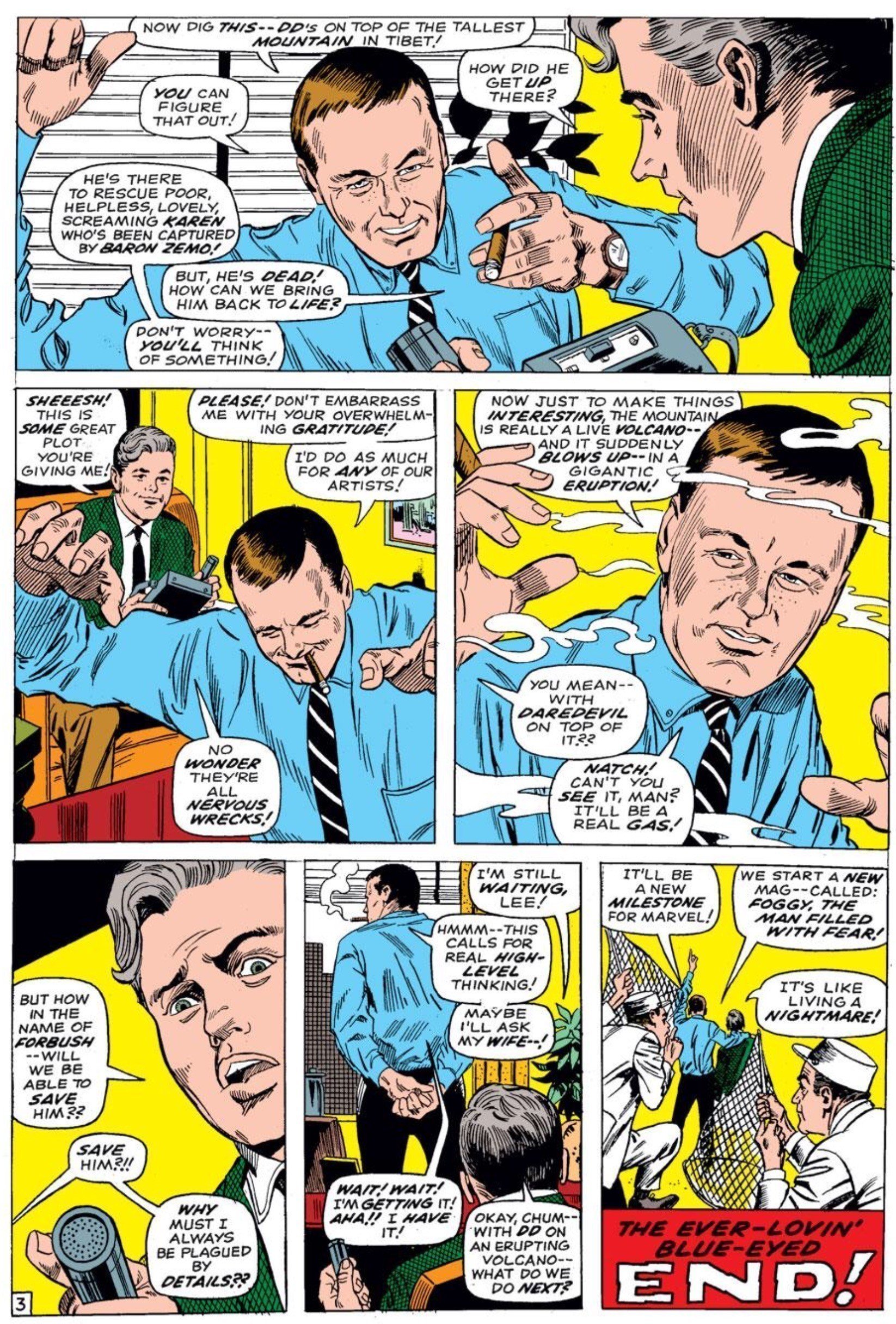 Click this text to buy reprint and read
Click this text to buy reprint and read
By some accounts, Stan Lee and a few others have said that he would give them an initial idea, the artist mapped it out and he filled in dialogue bubbles after. Other accounts have said that there was never an initial idea, and that Stan would received pages with story and art panels originated by the artist and Stan would fill in the dialogue bubbles later. At this point it is a game of he said/he said and there is no way to prove it, however it is interesting to see published accounts of what some depict versus others in this controversy. So let’s travel down the time line to what is published regarding credit over at Marvel in the 1960s especially in relation to Stan Lee, and his creative partners, Jack Kirby and Steve Ditko, with a few others.
read below and/or click the video:
In 1965, Stan writes in Fantasy Masterpieces 1 that Jack Kirby is “without peer in almost every type of imaginative, far-out fantasy!” He also writes that Steve Ditko is “an imaginative inventive perfectionist, he combines the skill of master storyteller with the eye of a dazzling designer!”
In 1966, Stan Lee had an interview for the New York Herald Tribune and they portray a Marvel Method plotting session between Jack Kirby and Stan Lee:
Both Stan Lee and Jack Kirby are ridiculed for their looks in January of 1966 in articles covering the new “Marvel Age.”
Later on in 1966, Stan Lee had another interview, now with a toupee, with the Chicago Sun Times Midwest where in a couple separate paragraphs (assembled here) he said,
Thanks to my friend Ken Quattro for bringing this article to my attention. Note that he said the term “we” denoting a collaborative group creation effort which is admirable compared to what he says later in life. Stan was speaking a bit more collaboratively he was saying, “we’re creating fairy tales for adults.” However on the sidelines the magazine editor or writer wrote:
In this magazine’s caption, they write that specifically “HE” created those characters. This seems to be a common theme in his interviews where he says something, and the media says another. Did he tell them HE created or was that the interpretation of the magazine writer because he was socially charismatic in his discussions? who knows, but that sort of thing rubs the pencilers/plotters like Jack Kirby or Steve Ditko the wrong way. In SICK magazine 48, 1966, there are satire pages written by Joe Simon (Jack Kirby’s ex-partner of many years) discussing Stan’s credit grabbing at Marvel.
The Fantastic Four Cartoon by Hanna Barbera 1967 says Based Upon an Idea by Stan Lee and Jack Kirby. So this is again, a very collaborative statement.
In 1967, they are both interviewed for a radio show and the DJ says that the Marvel Comics are “written and drawn by Stan Lee and Jack Kirby.” When asked about the creation of the Hulk, Stan responds as “we started…” saying that this was a collaborative work. As they discuss Thor, the radio DJ says that they both come up with Thor every month and Stan says that “Jack is the greatest mythological creator in the world.” In discussing Thor vs Hercules with equally powered mythologies, Jack says, “WE felt that they should contend with each other.” Stan then says, “WE create our own mythologies, we create our own universes.” In regards to Galactus and Ego, Stan says that “Jack… is too darn imaginative” and that “he came up with an idea, a fellow named named EGO who’s a living planet” and Jack says, “I came up with a few [villains] on a galactic scale” and explains the bioverse to Stan and the radio DJ. in discussing the humans, Stan says about Jack that, “then Jack had to create a whole bunch of inhumans.” Stan says, “I don’t know what he’s going to draw” and “I put in the dialogue and the captions.”
In Bachelor College Magazine, 1968 Stan Lee says that he would “cry a little” if Jack Kirby left and that “there is no doubt that Jack set the pace” at Marvel. He says about Jack leaving the characters, “I know the way I feel about them… to leave would be almost like abandoning your children.”
He also mentions that Fantastic Four 1, 1961 was a collaborative effort by using the term, “we.”
He also describes the Marvel Method in creating a comic book in this same 1968 interview that is consistent with the Gene Colan Daredevil annual.
In his interview with Castle of Frankenstiein Magazine, 1968 he says that Jack is a co-writer on their comics.
Angel and Ape 2, 1969 mimics Roy Thoms and Stan Lee. Inks by Wally Wood. They made Roy look like Stan (and called his character, Stan Bragg) and Stan look like Roy discussing signing work that isn’t theirs in “Most Fantastic Robbery in History.” Script by Sergio Aragones and Bob Oksner, pencils by Oksner.
In 1970, this is two years into Perfect Filming and Chemicals buying out of Marvel Comics from Martin Goodman, and Jack Kirby leaves Marvel and we see that in the Blast comic collector, 81 he says that the Fantastic Four was”my idea”, that it wasn’t a co creator ship and he goes over to DC comics.
Stan Lee was on the To Tell the Truth show in 1971, at this time he was Editor of Marvel and soon to be Publisher.
It is possible that his old creative partner Jack Kirby saw this 1971 episode, and satirized Stan Lee, toupee and all in Mr. Miracle 6, 1972. This issue was made after Jack left Marvel and went over to DC, and satirized Stan Lee as “Funky Flashman” as a verbose user and abuser of artistic talent, working as a driver of slaves in a happy “Marvel” family.
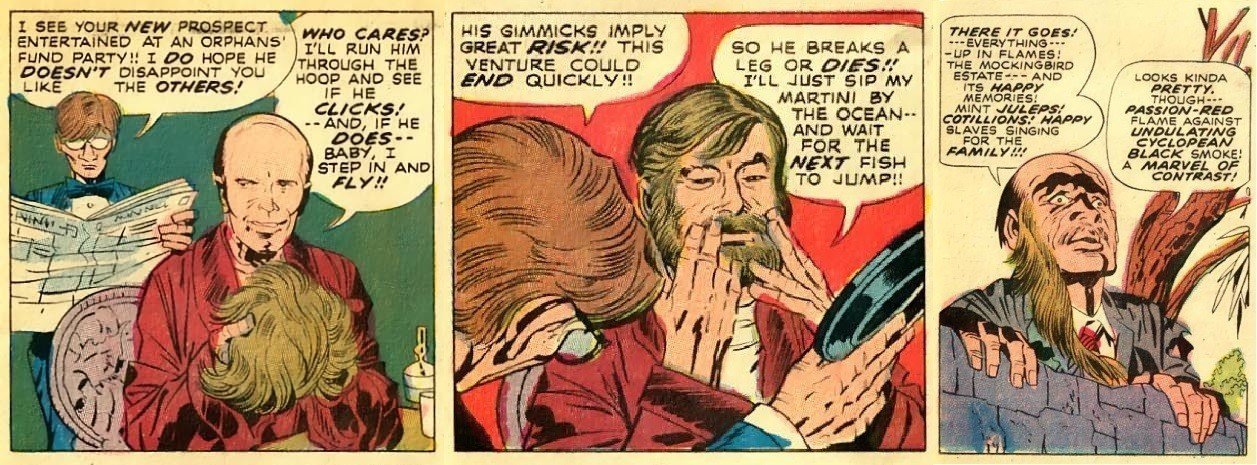 Click this text to buy reprint and read
Click this text to buy reprint and read
So then we fast forward a little bit more and Martin Goodman left his publisher seat in 1972 and, Perfect Filming and Chemicals chooses Stan Lee to be the publisher instead of Martin Goodman’s son, Chip and in 1973 a year later, comes out the fanzine from Marvel that Jim Steranko made which said he created the Marvel age of comics with no mention of Kirby there and that he and Marvel have become synonymous. This increases Stan’s sole creatorship claim up a notch by writing that Stan Lee created “The Marvel Age of Comics.”
In 1973, Stan Lee is interviewed for Andy Warhol’s Interview Magazine #30 and he summarizes his work at his first year of Marvel (Timely) comics working under Joe Simon and his former collaborator Jack Kirby. Note he refers to Jack and Joe as “those two guys.”
In 1974, Origins of Marvel Comics, Stan Lee’s personal language on the creation of the FF changes where he claims sole creatorship of the characters that he gave co-creatorship to in both prior interviews and early issue credits. Stan Lee releases Origins. In 1974 and he writes that, “I had a talk with my wife, I had a mid life crisis, Martin Goodman mentioned the Justice League of America why don’t you create a team of superheros.”
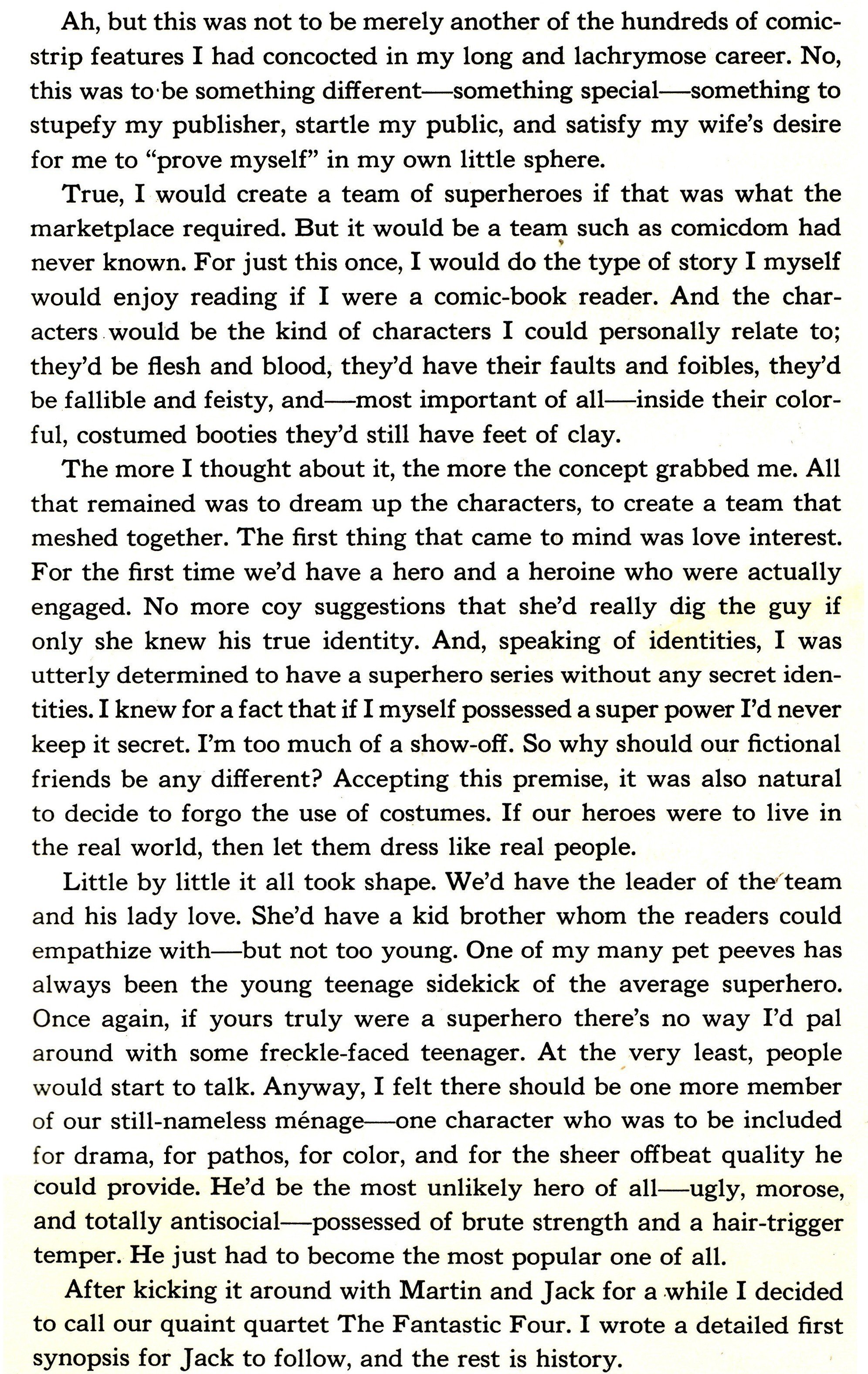 Click this text to buy reprint and read
Click this text to buy reprint and read
So there is a definite change in Stan’s recollection in creator credit compared to his 1966 interview where he uses the term “WE.”. At the same time, he discusses how it was his wife who inspired this sudden urge to create in his comics after 20 years in the business.
Stan writes there that he wrote a detailed first synopsis for Jack to follow and visualize and “the rest is history” so there’s this interesting maneuver here where some think that although he was saying Lee and Kirby in the sixties, once he leaves, Stan help solidify Perfect Film and Chemicals ownership over the characters. So some wonder if Perfect Film and Chemical can keep Stan Lee happy, who was an employee with salary relations with Marvel at the time with a permanent job and a nice position and good pay then he will continue to keep Perfect Film happy by saying he was the creator and that helps tighten their hold on the characters of Fantastic Four and other characters that follow. And some have said taht essentially cuts Jack Kirby out the action which with Jack Kirby not being around Marvel at the time maybe so that adds a little context of how safe he felt doing that.
In 1974, Jack Kirby returned to Marvel, a few years after he depicted Stan Lee as Funky Flashman and said this about his time with Stan in the early 1960s as a couple of guys who “shared ideas.” This is more of a collaborative statement so with Jack it seems like when he worked for Marvel he’d speak to them more collaboratively but then when he leaves Marvel it’s more like, the Fantastic Four was his and that’s all there is to it.
In FOOM 11, 1975, Kirby had already now been back at Marvel and the language at FOOM changes from Stan’s sole creatorship to a co-creation shown here, speaking with Kirby.
Later on in this interview, Jack discusses how happy he was at Marvel as if it was an old family.
This is also an interesting change in language from Jack when he was back at Marvel compared to his sentiments that he expressed in Mr. Miracle 6, 1972 when he was at DC comics. In 1975, Stan Lee was interviewed over in the United Kingdom working on Marvel UK duties when he said this regarding Jack Kirby in Fantasy Advertiser International, April 1975 edition: which can be found here, http://forbushman.blogspot.com/2017/06/a-serious-interview-with-stan-lee-april.html :
In 1978, Jack Kirby said this about his “collaboration” with Stan Lee in FOOM 19, 1977. He speaks positively about his time with Stan Lee writing I’ve always enjoyed working with Stan – we’ve been a successful team. In the collaboration, something good comes out.”
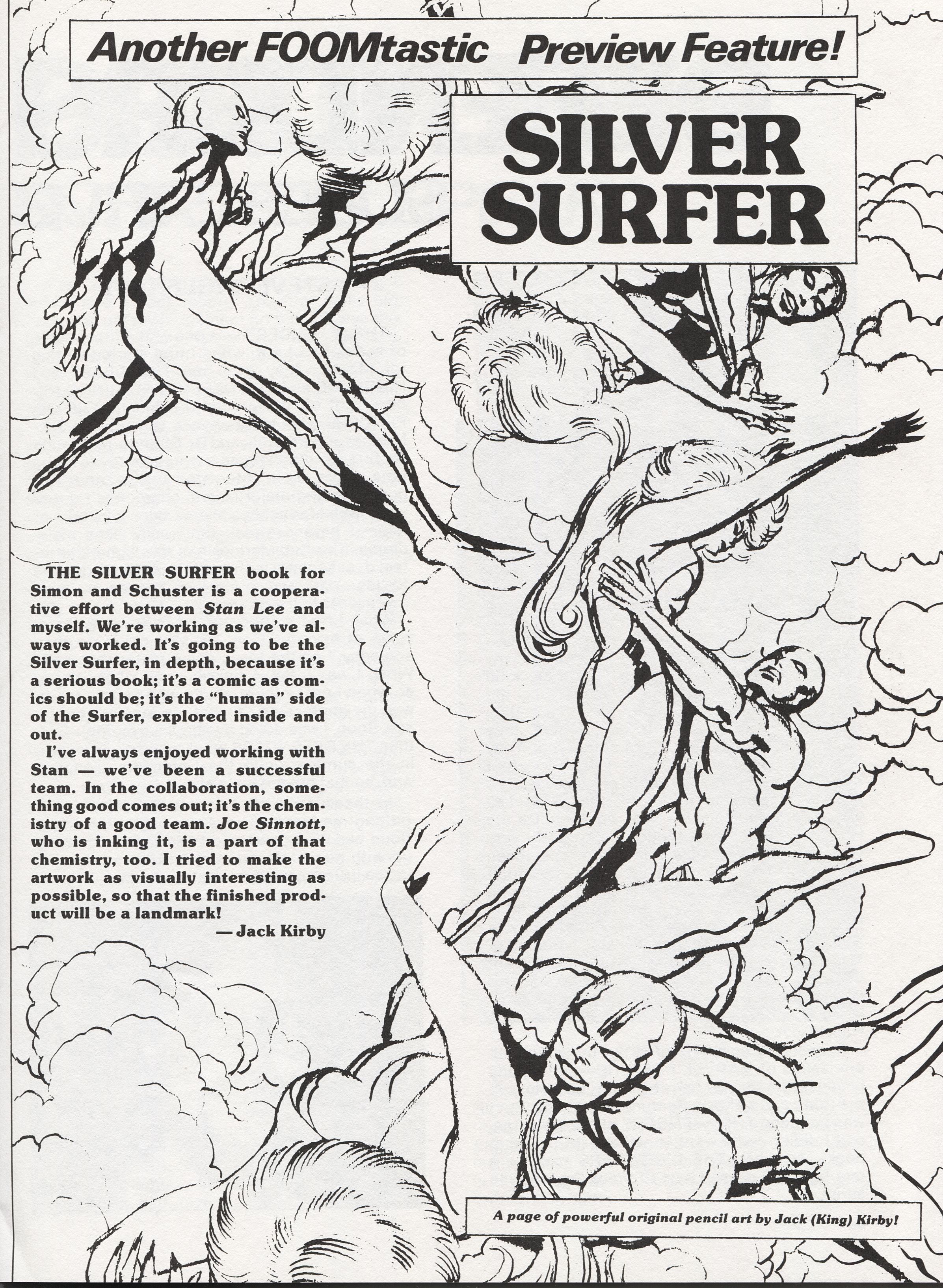 Click this text to buy reprint and read
Click this text to buy reprint and read
This is clearly a far more positive tone by Jack Kirby regarding Stan Lee than what we will read later. Since Roy Thomas was mentioned in the satire panels, what did he think about Jack and Stan’s co-creation of the Fantastic Four? In 1978, Roy Thomas said in Collectors Dream Fanzine that the Fantastic Four’s spirit derived from Jack Kirby’s Challengers of the Unknown 1957 which is different than what Stan wrote in 1974, but more in line with the early credits that Stan once gave Jack in the early FF issues and the aforementioned 1966 interview.
Here is a short visual comparison of 1957 Jack Kirby/Dave Wood’s Challengers of the Unknown vs Jack Kirby/Stan Lee’s Fantastic Four.
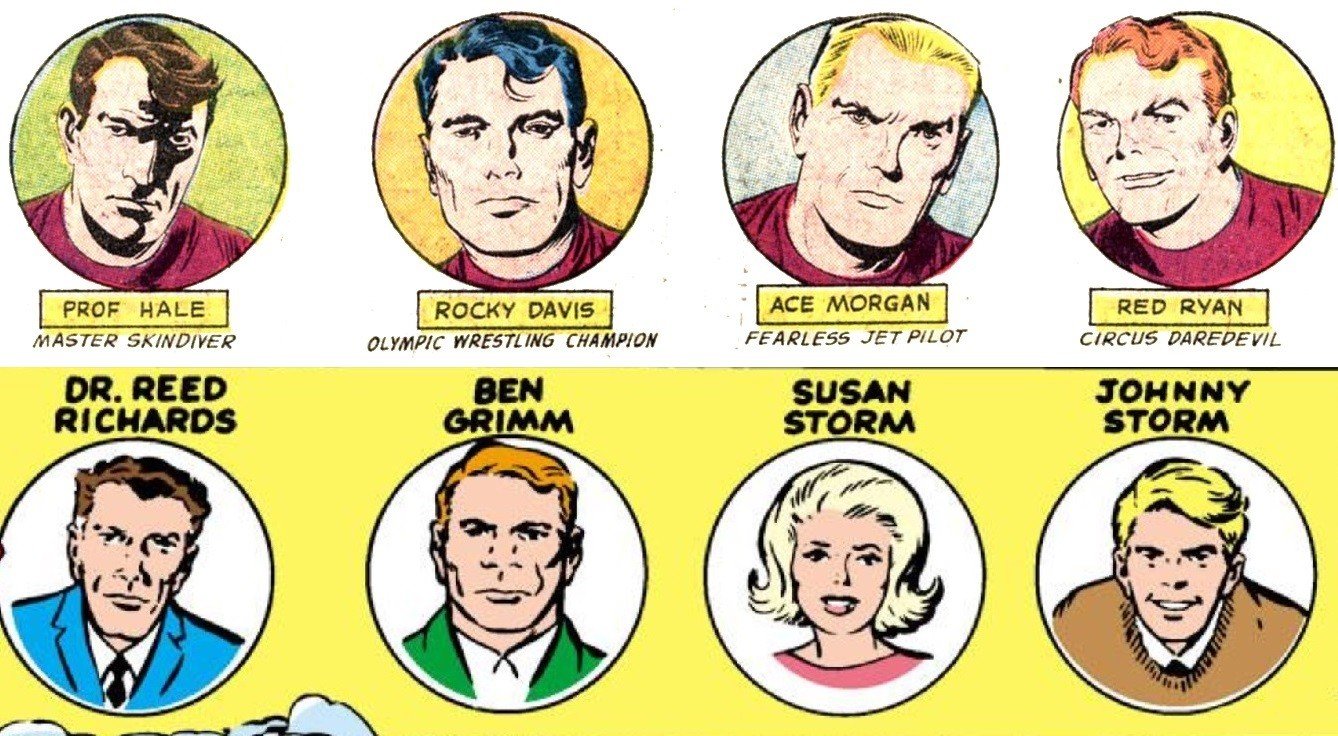 Click this text to buy Challengers reprint and read
Click this text to buy Challengers reprint and read
Massively more in depth discussion regarding Jack Kirby character precursors to 1960s Marvel are found in a previous CBH article, Jack Kirby: Co-creator of the Marvel Universe, https://comicbookhistorians.com/jack-kirby-co-creator-of-the-marvel-universe/ .
In 1978, Arnold Drake wrote about Stan Lee in a 5 part series Ego-Man in Sick Magazine 120-124, edited by Jack Sparling where he writes that Stan grabs credit from others, and is a master manipulator. (ouch!)
Jack Kirby left Marvel in 1978 to work in Animation, then does some work with his Darkseid character in the 1980s, meanwhile struggling with Marvel in the 1980s to get his original art back, as well as try to delineate once and for all that he co-created the Fantastic Four which didn’t occur for a while. He had some encounters with John Byrne as well which is discussed in the previous episode.
In 1983, Jim Shooter and Stan Lee are interviewed by Marvel Age issue 8 and Stan says he created the Fantastic Four without any mention of Jack Kirby being part of the process!
In 1986, Stan writes in the Comics Buyers Guide 16 that he co-created the Marvel characters with Jack.
Then New World Cinema buys Marvel comics and what’s interesting a year later Stan Lee says Jack Kirby thinks he created these characters because he drew them. Some consider that a statement like that can help again solidify the new corporate leadership’s hold on the characters in much the same way that it did when Perfect Filming and Chemical had just bought it.
Then later in 1987, it was Jack Kirby’s 70th birthday and he was interviewed on a radio show. Roughly 18 minutes into the interview, Jack Kirby says he had a deep role in the creation of Spider-Man and that all the comic book art pages he turned during his 11 years at Marvel in were all creatively his except the dialogue in the balloons.
Stan Lee calls in a couple minutes after that and they discuss a positive tone of working together with an acknowledgement of it being difficult to know for sure who did what. At 33 minutes, Stan later says that “every word of dialogue is mine, every story” and then Jack says “I wrote a few lines myself,” and “it was the action I was interested in.” In 1990 he had an interview in the Comics Journal 134 with Gary Groth. At this point in his life, Jack is older and four years from death, with a large amount of disappointment of what little credit or money he received for his Marvel co-creations. That interview can be found here, http://www.tcj.com/jack-kirby-interview/ . Here are some snippets from that interview:
First Jack establishes that Stan Lee wasn’t a writer or creator, but only an editor.
Jack then establishes that it was he that created the Fantastic Four, and the other characters and created all the stories, while Stan was more of a desked organizer of talent.
Jack then tells Gary that Stan did not create the Fantastic Four.
Jack Kirby also discusses that he couldn’t ever talk to Stan about his concerns with the application of credit on their Marvel issues, and further says that Stan was the editor of Marvel, had all the influence, and was the point man, so Stan could do whatever he wanted with the pages. Jack goes on to say that he would word the pages as well before handing them in. Jack has mentioned that he continued to go along with the process because he was blackballed from DC as discussed in an earlier episode, and needed the freelance fees to support his wife and family.
Take in mind that Roz corrected Jack on the placement of the words in the above quote, showing that he misremembered a detail in this interview, so there is a chance he misremembered other details. Jack also says that he solely conceived the stories for the pages, and explained how Stan flattered him to take more of his ideas. Jack then warns Gary of ever working with that sort of personality. Roz Kirby, Jack’s wife even asks the question, what did Stan actually create before Jack came along and after he left?
Gary Groths asks Jack, Stan says that he created the name the Fantastic Four and Jack Kirby says no he didn’t, I came up with the Fantastic Four and Groth asked well Stan says he wrote a detailed synopsis for you to follow and Kirby says, I’ve never seen that synopsis, that’s an outright lie.
This 1990 interview with Gary Groth is an imprint of the type of emotions that he probably took to his death. It lays a despondent picture of someone who feels exploited. In 1989 Revlon buys Marvel from New World Cinema and then a couple years later, their Chief Executive Ronald Perelman takes Marvel public. And so there’s a lot of money coming in and Fantastic Four 358, 1991 Stan Lee writes, “here is a copy of the original synopsis” he printed out in the issue and above it he writes, “here’s a synopsis that I’ve bee talking about since 1974 and this is the one I wrote when I dreamed up the Fantastic Four back in 1961.”
This document was not seen until the 1980s. That statement has the function again by solidifying the new corporations hold on the characters, money’s coming in from going public and Stan Lees happy and Marvels happy and it also acts as a rebuttal to Jack Kirby’s narrative that he never saw any sort of synopsis. Jack died in 1994 and Stan Lee was seen at Jack Kirby’s funeral. In Fantastic Four 400, 1995, Stan Lee writes again on the origins of the Fantastic Four and it differs significantly from his 1974 Origins book. He specifically writes that “Jack Kirby and I created the Fantastic Four” in a more collaborative effort similar to his 1966 interview.
In 1998, Roy Thomas said that Stan Lee wasn’t sure if he wrote the Fantastic Four 1 synopsis before or after speaking to Jack Kirby first in Jack Kirby Collector 18, 1998.
Dick Ayers wrote and illustrated his autobiography in 2005 as the Dick Ayers story, and depicted their relationship with Ayers wanting more story telling credit.
In 2009, Stan Lee was deposed in the Kirby Estate vs Disney court case being questioned on who created what? Marc Toberoff, the attorney representing the Kirby’s asked Stan Lee about statements he made in the past that expressed a collaboration with Kirby in the co-creation, and Lee said,
which doesn’t quite make sense since Stan wrote the FF was a co-creation in 1995, a year after Jack Kirby died. And so by doing that with all the attorneys there, and all the money on the line, and all the Marvel people really keeping a close eye on it, again some think that Stan Lee keeps true to form like he did back in 1974 that if he denies any sort of creator authorship from Jack Kirby then he helps tighten Marvels hold on the characters. Some believe that this is basically the role he’s been playing as well as promoting the Marvel brand which everyone has fallen in love with. So that case did not make it and the Kirby estate did not win ownership, it got appealed a couple times and they kept losing. The main reason was due to Jack Kirby’s work for hire relationship.
And in 2014 they tried to take it to supreme court and Disney essentially settles out of court, they don’t want to deal with supreme court fall out. And then finally Kirby gets credit, there’s a settlement to the Kirby family and essentially now the byline in all the Fantastic Four magazines finally say Fantastic Four created by Stan Lee and Jack Kirby, just like that original byline said in the very first issue that came out over 50 years ago.
Regarding Steve Ditko, he had some contention with Stan Lee and a particular point of contention with Jack Kirby both regarding Spider-Man.
read below and/or click the video:
The creation of Spider-Man and Dr. Strange takes a circuitous route based on many sources, so lets start at 1963 for Fanzine, Comic Reader #16 when Stan Lee wrote to a fan that Dr. Strange was Steve Ditko’s idea in the first paragraph.
A few years after Stan is finished with finetuning the credits in the Amazing Spider-Man and Dr. Strange comic book. Steve Ditko starts to get plotting credit on both Amazing Spider-Man and Dr. Strange in 1965.
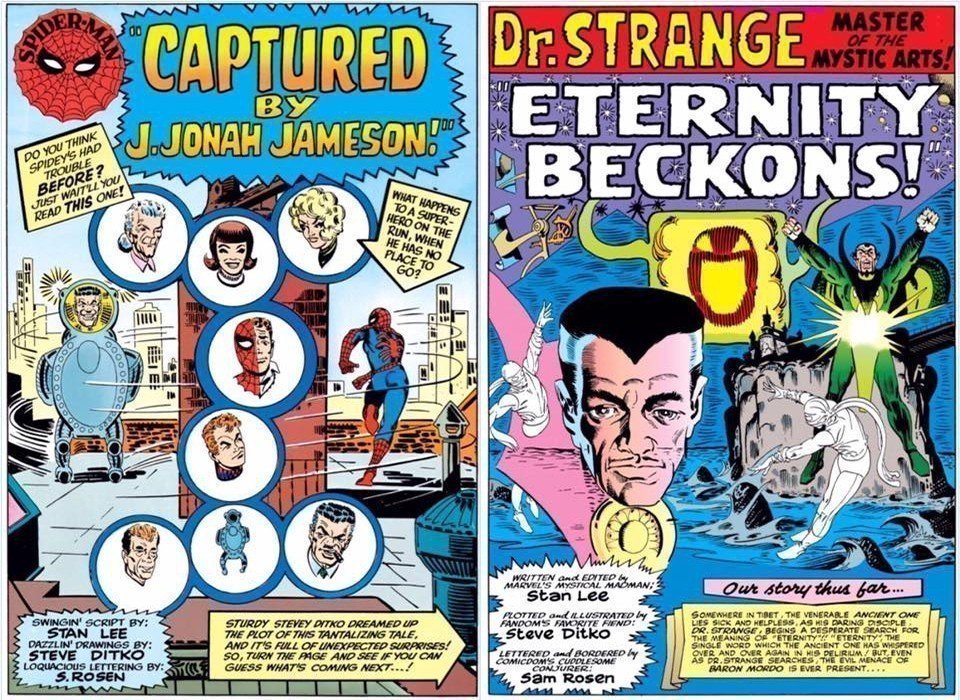 Click this text to buy Dr. Strange reprint and read
Click this text to buy Dr. Strange reprint and read
In January 1966, Stan Lee has his interview with the New York Herald Tribune and give his take on Steve Ditko at this time, saying that he doesn’t plot Spider-Man anymore and that there is schism going on in the direction of Spider-Man’s personal life. He also discusses that they argued over plot lines, and that Ditko thinks he is the genius of the world that needs to ink his own pages..
Steve Ditko was evidently unhappy with his working arrangement with Stan Lee and left Marvel later that same year in 1966, then did some work at other companies like Charlton and DC. After Steve’s departure, there was now a vacuum at Marvel to tell the story of how Spider-Man was created. In the end credits for the Ralph Bakshi era of the Spider-Man cartoon in 1968, the character creation read:
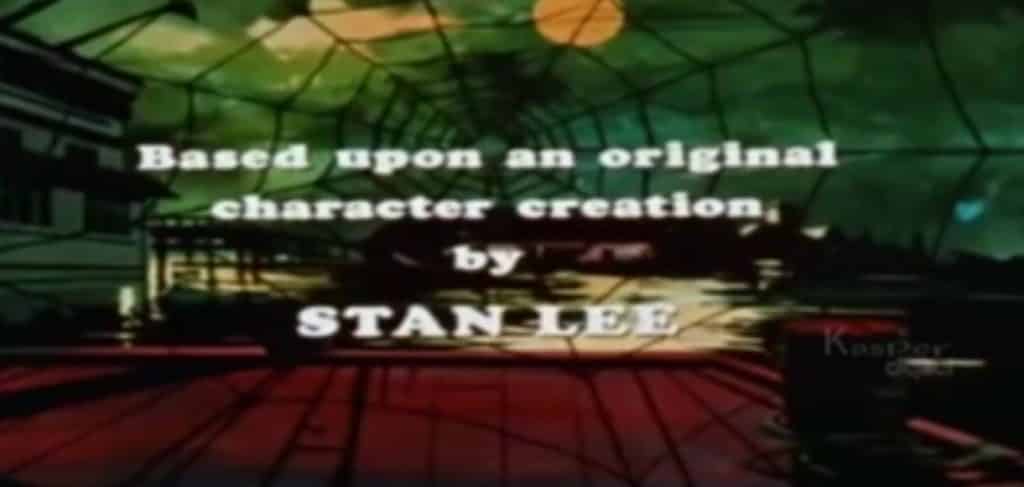 Click this text to buy DVD and watch
Click this text to buy DVD and watch
Later, Stan Lee wrote this in his 1974 Origins book, that he wanted a teenage character with a name kind of like Superman, and that he loved the idea of a Spider character because he read the Spider pulp when he was younger, and convinced his publisher Martin Goodman, a cousin in law to go forward with his Spidey idea.
Stan also wrote that he originally gave his Spiderman teenager idea to Jack Kirby who drew the character too heroically, and felt he wanted a realistic grounded approach from Steve Ditko and gave the project to him instead. In the 1974 Origins book, Stan changes his rendition of what went into creating Dr. Strange compared to his 1963 fan letter in the Comic Reader and writes that it was his childhood memory of Chandu, the Magician that pre-empted the creation of Dr. Strange, and rendered Steve Ditko as the person who “took up the art chores.”
In 1975, Stan was asked about the circumstances around Steve Ditko leaving Marvel in Fantasy Advertiser International, and he answered that Steve got more socially withdrawn, professionally demanding, more impossible to work with and then left the company.
Kirby mentions in The Province, Jan 1977 that Spider-Man’s name was suggested by him, as a remnant character from the defunct early 1950s Mainline Comics that he put together with Joe Simon.
Steve continued to work at other companies, and then worked at Marvel again starting 1978. In 1979, Fireside publishing released a reprint of Dr. Strange with 80% of the art by Steve Ditko with a final story at the end by Barry Windsor Smith. There were some pages written by Stan depicting the history of Dr. Strange, the other main Ditko Marvel co-creation, and Stan wrote that Steve Ditko dreamed up the story and the art, and that his own job was to fill in the dialogue balloons. To be clear, this is in regards to Dr. Strange only, and Spider-Man is not mentioned in this Fireside book; however I bring it up here in the context of Steve Ditko and his time at 1960s Marvel.
In 1980, Stan Lee moves to Los Angeles and is credited on CBC’s Beyond Reason show as “The creator of Spider-Man.”
Throughout the 1980s working on or creating various characters like Captain Universe and Speedball. In 1982, Jack Kirby had an interview with Spirit creator Will Eisner who said, “Spider-Man was discussed between Joe [Simon] and myself. Spider-Man was not a product of Marvel.” What did Jack Kirby mean by this? Joe Simon adds more to this story in his 2003 comic history text, the Comic Book Makers which we discuss later. In 1986, Comics Interview 45 Jack Kirby says that Ditko developed Spider-Man and that it was the artists that come up with the stories and art, and Stan was essentially a production coordinator.
Stan Lee married Spider-Man and Mary Jane on TV claiming sole Spider-Man creatorship in 1987.
Based on a 1988 interview, Greg Theakston writes in The Steve Ditko Reader Vol. 1, 2002 a quote from Eric Stanton (a fellow artist in the same one room Studio as Ditko at the time of Spidey’s creation) says he helped come up with the idea for wrist web shooters.) , “My contribution [to] Spider-Man was almost nil. When we worked on storyboards together, I added a few ideas. But the whole thing was created by Steve on his own.” He continued, “The whole thing was Steve Ditko. I think I added the business about the webs coming out of his hands, and we talked about the characters, and in turn, he helped me with my stuff.” In 1990, Joe Simon stated in the Comics Journal 134 that his co-creation the Fly from 1959, eventually became Spider-Man published 1961.
In 1990, during Jack Kirby’s Gary Groth interview, Jack specifically said he created Spider-Man, the costume and the first cover.
Steve Ditko replied to this that this was a factually wrong statement from Jack Kirby, and had this to say about who created the costume in 2001.
Here is the unpublished first cover of Amazing Fantasy 15 penciled by Steve Ditko that was passed over by Stan in favor of the second published cover that Jack penciled and Steve inked. This unused cover is featured on the back of Marvelmania 2, 1970.
Robin Snyder’s History of Comics (Vol. 1) #5 (May 1990) as part of Ditko’s essay “An Insider’s Part of Comics History: Jack Kirby’s Spider-Man article shown again and discussed in Alter Ego, 2001, Steve Ditko contests Jack Kirby’s claim of creating the costume, saying that he received a sketch of Jack Kirby’s costume which was more like Captain America, and also saying that Steve himself created the costume, look and movement, webshooters, etc. Steve Ditko also discusses the 5 page synopsis that he received from Stan which was a product of a conversation between Stan and Jack, which went mostly unused including a penciled splash picture of the Jack Kirby drawn Spider-Man. He also wrote “Stan said Spider-Man would be a teenager with a magic ring which could transform him into an adult hero-Spiderman. I said it sounded like the Fly, which Joe Simon had done for Archie publications…. Kirby had penciled five pages of his Spider-Man. How much was pure Kirby, how much Lee, is for them to resolve.” This early version reminded Steve Ditko of the Archie comic by Joe Simon and Jack Kirby called the Fly, and he has written that he pointed out the similarity to Stan Lee, so Stan (wisely) chose to give Ditko the project, likely to make it different from the Fly and add his own Ditko flair to the character.
In 1990, Steve Ditko discussed his creative input into the Spider-Man character in “An Insider’s Part of Comics History.” He mentions what part of Spider-Man’s creation was from Stan Lee and what parts were from Steve Ditko to prove that no one person created Spider-Man, and that he had the most visual and kinetic input into the character’s genesis.
This is meant to illustrate from Steve Ditko that everything we love seeing in Spider-Man came from himself. Stan Lee wrote in 1999 that he always considered Steve Ditko, Spider-Man’s co-creator.
Then in 1999 Steve writes this:
Here is more of Steve Ditko’s response to Stan’s inconsistency on credit where he puts quotes on both Spider-Man and Dr. Strange’s creation that he collected and published in 2001, A Mini-History as well as Stan joking that he will take “credit for anything not nailed down.”
Steve Ditko had this to say in 2001, showing that the two names at the end of the first Spider-Man story in Amazing Fantasy 15, 1962,
“Stan Lee + Steve Ditko” does not necessarily indicate creator status.
So what did Jack Kirby mean in 1982 when he said Spider-Man was a product of him and Joe Simon? Joe Simon wrote in his 2003 (originally published 1990) book, Comic Book Makers, “In 1953 I created a superhero, a young man with spider-like qualities. I put the character in a presentation for a publisher and entitled it Spiderman. I had [C.C.] Beck do the penciled sketches. He was the predominant artist for Captain Marvel, the man who gave Captain Marvel its special comic style, and I believe he came out of semi-retirement to work with me on this. At the last minute, I changed the name from Spiderman to the Silver Spider. I thought at the time there were just too many ‘man’ titles around — Superman, Batman, that stuff. I took the presentation up to Harvey Comics, where it languished.” Here is a 1 page 1954 affidavit from Harvey editor in chief, Sid Jacobson to describe to the letter’s recipient his vision for the Silver Spider (1950’s Joe Simon Spider Man) as having the powers of a spider who web swings and has gadgets.
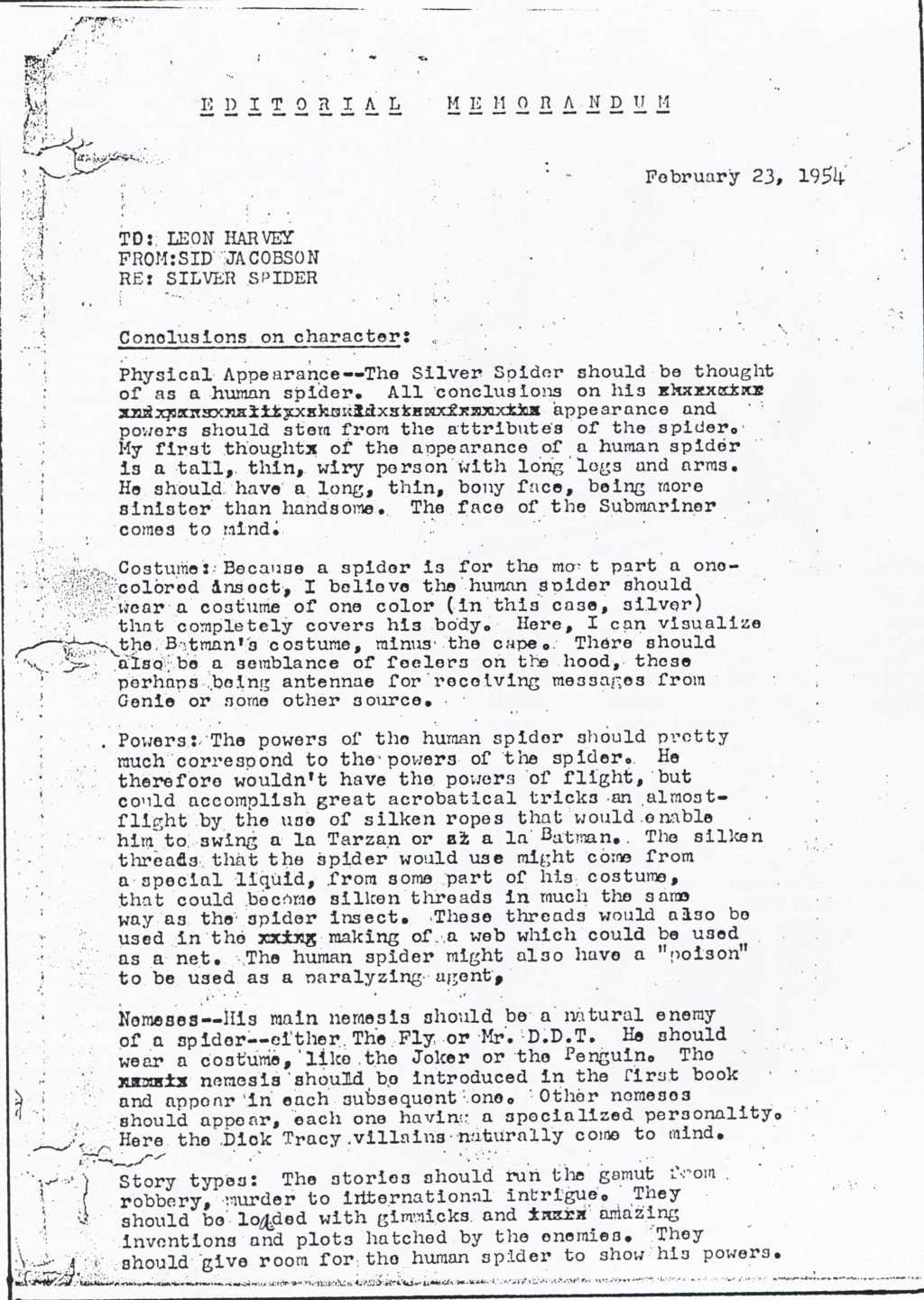 Click this text to buy reprint and read
Click this text to buy reprint and read
Here are 2 pages from the Silver Spider which was originally published in Pure Images 1, 1990 originally made 1953.
It is further explained, that this 1953 boy finding a ring to turn him into the Silver Spider is the same scene used by Jack Kirby and Joe Simon in 1959 in the Fly Comic.
To further see how the first 1959 Fly comic panel choreography matches with Amazing Fantasy 15, 1961 make sure to read or watch the Spider-Man section of a previous CBH episode, Jack Kirby: co-creator of the Marvel Universe episode.
Although Joe Simon claimed that he came up with the name Spiderman first in 1953 in relation to Captain Marvel’s artist, CC Beck, there was a Captain Marvel villain named Spiderman in Whiz Comics 89, 1947 by publisher Fawcett Comics which would to me seem more likely why Simon didn’t use the name, to possibly avoid a legal conflict.
This Spider Man that Joe Simon may have known wasn’t the first comic Spider Man. In 1942, the British media company D. C. Thomson & Co. responsible for The Hotspur, had a Spider-Man of Red Circle.
In 1934, Ed Wheelan made his detective serial titled “Spider Man.”
Also Ed Smalle did this story in DC’s House of Mystery #28, dated July 1954
So the name “Spider Man” was used a couple times before; however, back to Joe Simon, he also published what his original 1953 Spiderman logo looked like in his 2003 book (originally published 1990).
This is what Jack Kirby is likely referring to in his 1982 quote on the Spiderman that he and Joe Simon worked on, and then he goes further on to say that he brought that to Stan Lee. In 2005, Marvel Masterworks Stan Lee gives a different rendition of how Dr. Strange was dreamt up compared to his 1963 Comic Reader 16 entry.
In 2005, Strange and Stranger: The World of Steve Ditko, Lee says “Much later, I asked Ditko if he would ever consider coming back to do one final Spider-Man story. To my surprise, he said, ‘Not until Goodman pays me the royalties he owes me!’ I had no idea what he was talking about, as Martin usually kept me apprised of such things.”
Jonathon Ross interviewed and confronted Stan Lee on who created Spider-Man in 2007, he shows that although he considered Steve a co-creator, he still feels he dreamed it up himself because he came up with teenage character with the name, Spider-Man.
During an Interview in the 2000s, someone from the media again refers to the Marvel Age characters as “his creations” and Stan corrected them by saying he “helped to create” them.
Joe Simon died in 2011, but before he died, he painted a picture of what his 1950s Spiderman looked like which appears to be a combination of his Fly character and a Fly villain, Spider Spry.
In 2012, Stan Lee says in an interview that he came up with the idea for Spider-Man, “And then I saw a fly crawling on a wall. And I said, ‘Boy, it would be great if I could get a superhero who could stick to walls like an insect.'”
In 2015, Steve Ditko gives his perception of why he quit Marvel which is interesting to compare to the 1975 Stan Lee version above. Here is a couple paragraphs from his 2 page explanation. Generally when Steve Ditko turned in his Spider-Man pages, Stan Lee would go through a feedback session with him. That seemed to change after Ditko argued and got plotting credit for both Spider-Man and Dr. Strange in 1965. At this point, Stan Lee stops talking to him and has his assistant Sol Brodsky be intermediary.
Steve felt that he was not being treated well because Stan stopped talking to him, and later decides to quit Marvel, and mentions here that Stan never asked him why he left.
Some interpret this as Stan didn’t want to engage in any plotting discussion if Steve’s pay and credit was upgraded as plotter so focus on other things that need his attention in a busy office. Others look at it as a passive aggressive retaliation from Stan against Steve for taking some plotting money that used to go to him. Who knows. Either way, Steve Ditko felt ignored and left according to his own accounts. Here are two comic pages put together to review both versions of Spider-Man’s creation according to Stan Lee vs a composite version based on Joe Simon, Jack Kirby and Steve Ditko.
Regardless, Ditko and Disney/Marvel settled credits a while back and now the creator credits read just like they did back in Spider-Man’s first appearance.
Doctor Strange’s credits are now corrected to say what it neglected to say from the beginning.
So in the end of the day, who created what in Marvel 1960’s between these three men? That’s subject to how people interpret what is in writing on the topic, which is collected above. Some say that Jack Kirby and Steve Ditko created characters before their time with Stan Lee as well as after their time with Stan Lee, whereas Stan Lee didn’t create as many raw characters before and after. Others say, well the ones that Jack and Steve created with Stan shine the very brightest. At one point in both Jack and Stan’s career, they say they were sole creators, then they also say it was a co-creation. At most Steve Ditko says he created what was important, the visual character of Spider-Man, but still says it was a co-creation, whereas Stan has gone from considering it a co-creation, to claiming sole creatorship for the whole thing, and at the same time, Jack Kirby claimed sole creatorship at one time as well, although not as many times as Stan. Some say the artists created the characters and that Stan exploited them for money and credit, others say he was an editor that brought all the pieces together under one Marvel Universe, and that the dialogue was important characterization. Some go further to say that the words in the dialogue boxes were the “voice” of Marvel, and attribute that solely to Stan. Some focus on the characters, visual and action and don’t care about the voice. As the dust has settled, and the lawyers and estates, individuals have testified or written, the final credits have emerged as co-creations. What really happened back then is up to interpretation, but common sense tends to guide many on who they feel is correct. Try getting into an online debate and both sides will vehemently defend their point of view. Where do you stand on this issue? That’s up to you. Alot of it depends on what and who you value.
Join us for more discussion at our Facebook group
check out our CBH documentary videos on our CBH Youtube Channel
get some historic comic book shirts, pillows, etc at CBH Merchandise
check out our CBH Podcast available on Apple Podcasts, Google PlayerFM and Stitcher.
Use of images are not intended to infringe on copyright, but merely used for academic purpose.
Fantastic Four © Marvel, Amaziing Spider-Man © Marvel. Dr. Strange © Marvel, Steve Ditko articles © S. Ditko, Gary Groth interview © Comics Journal, Stan affidavit 1999 © Stan Lee Media, Origins ©Marvel, FOOM © Marvel, Dick Ayers Story © Dick Ayers, Photos ©Their Respective Copyrightholders, Stan Lee Toberoff Quote from Kirby: King of Comics











